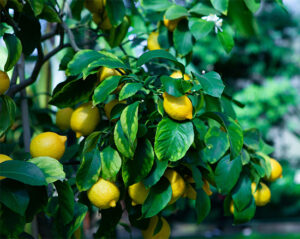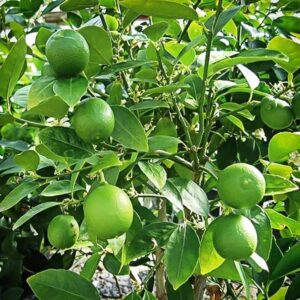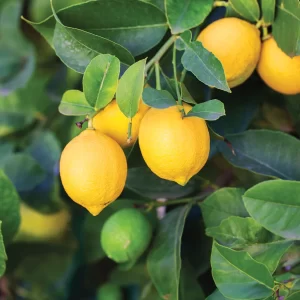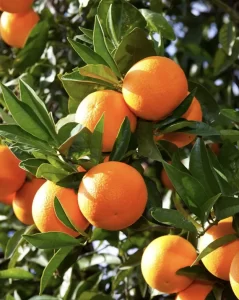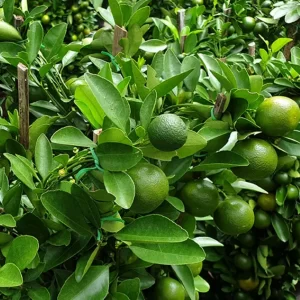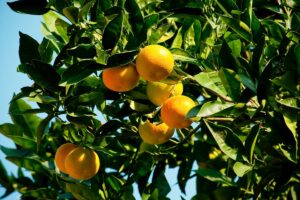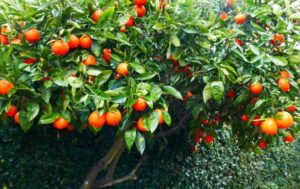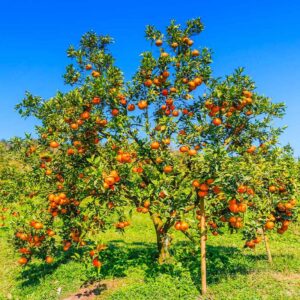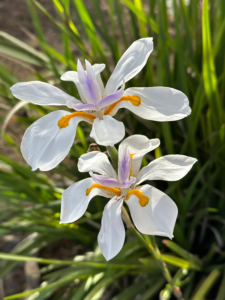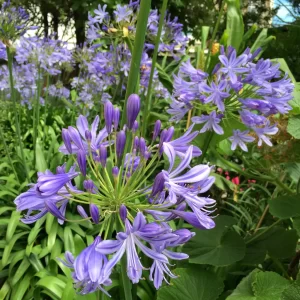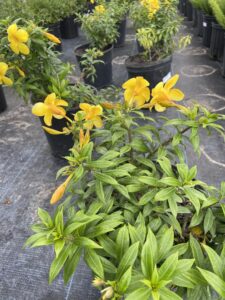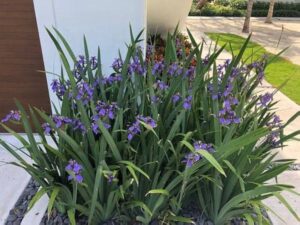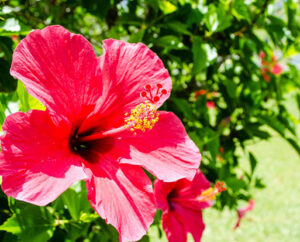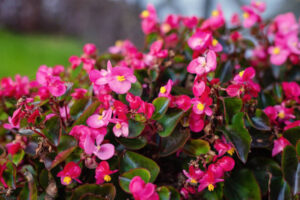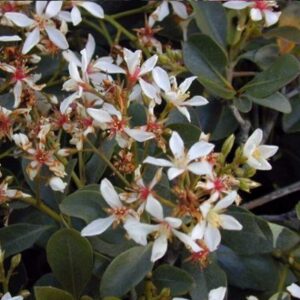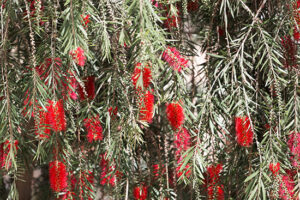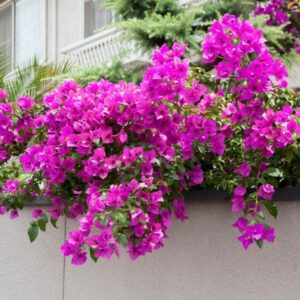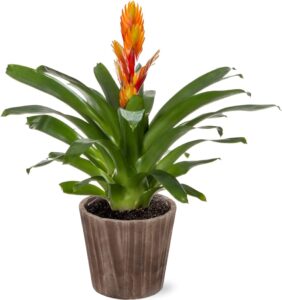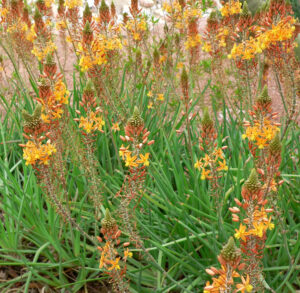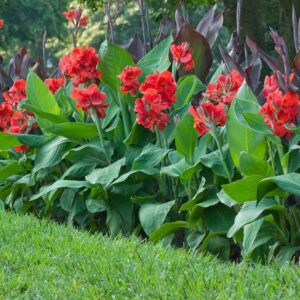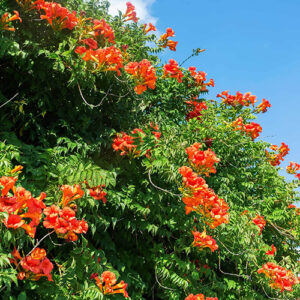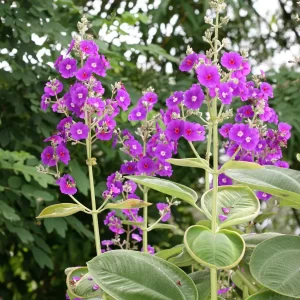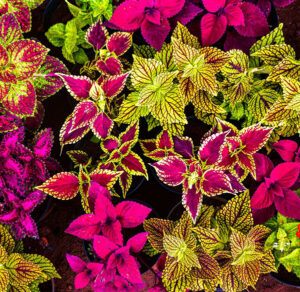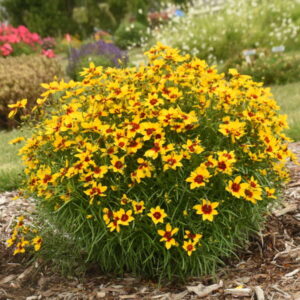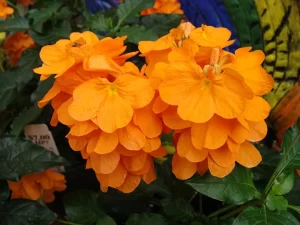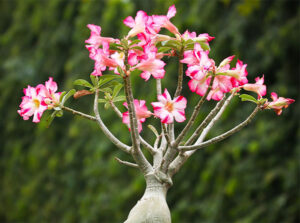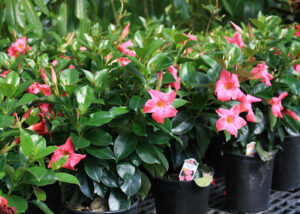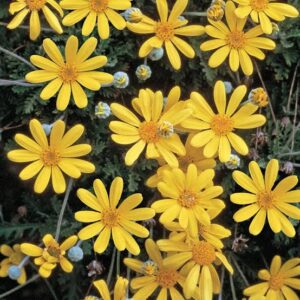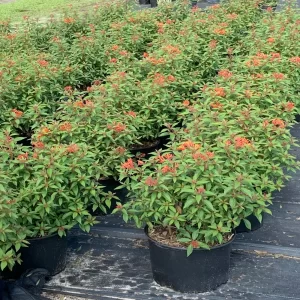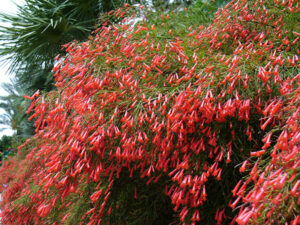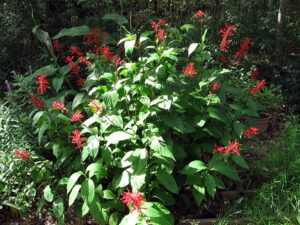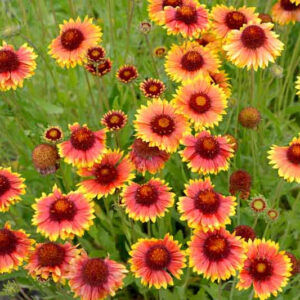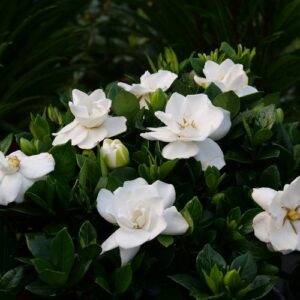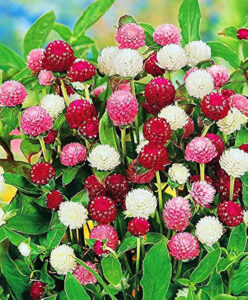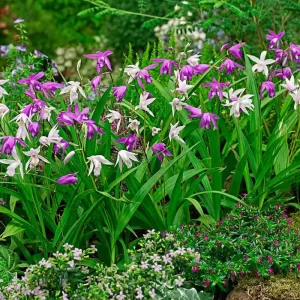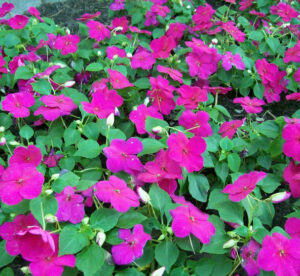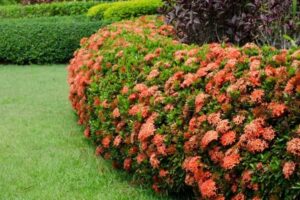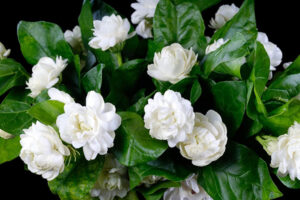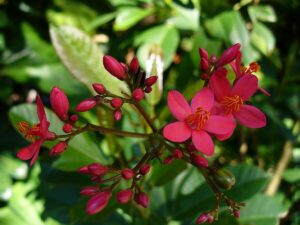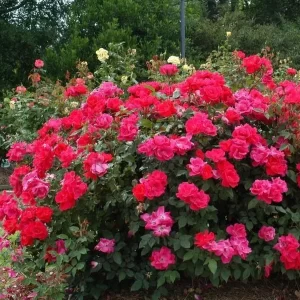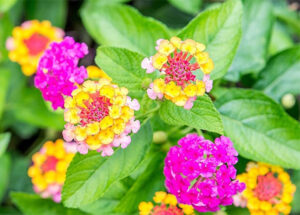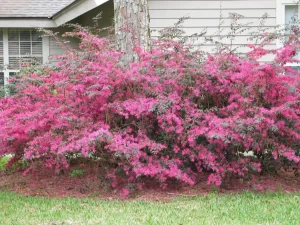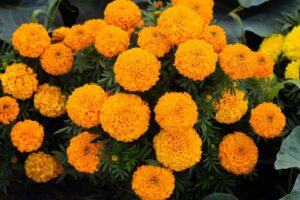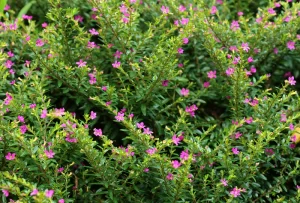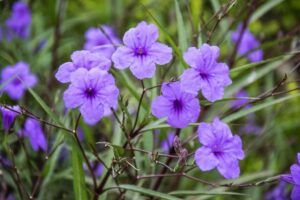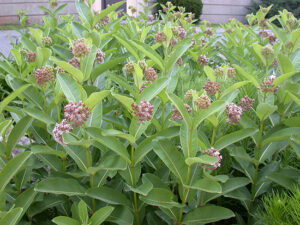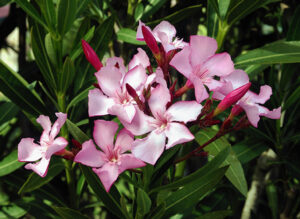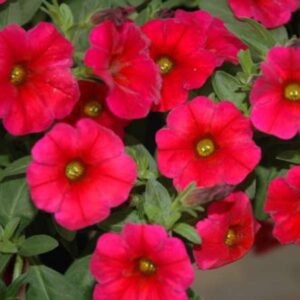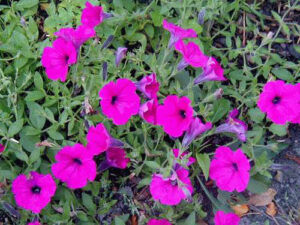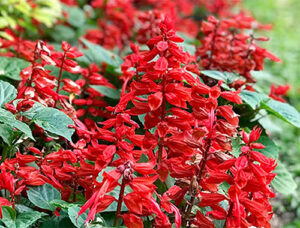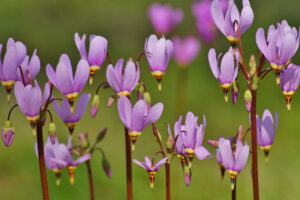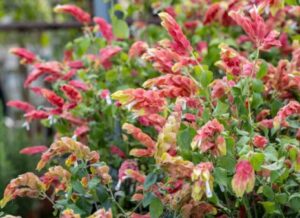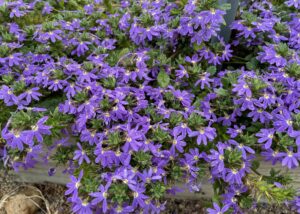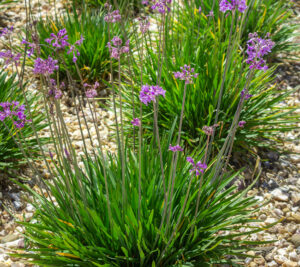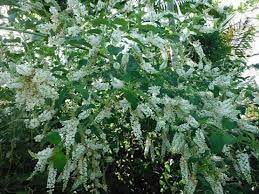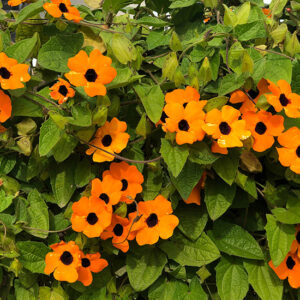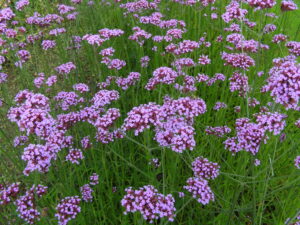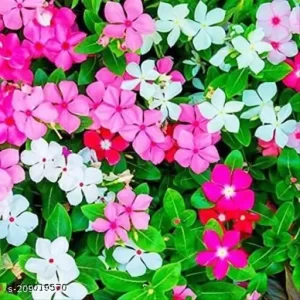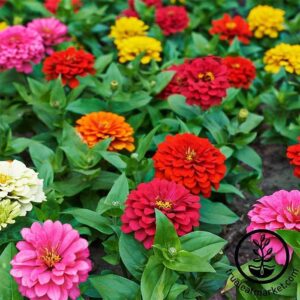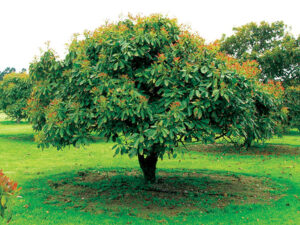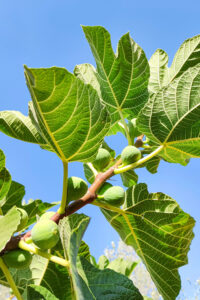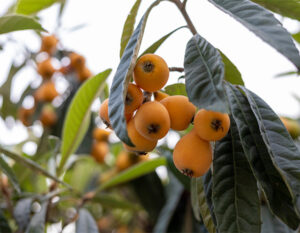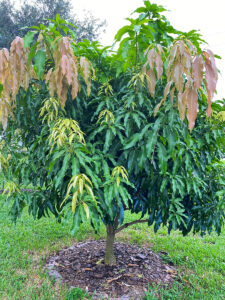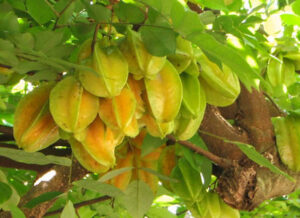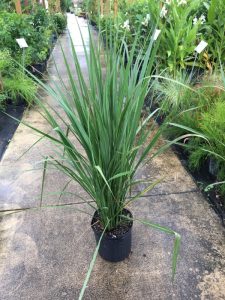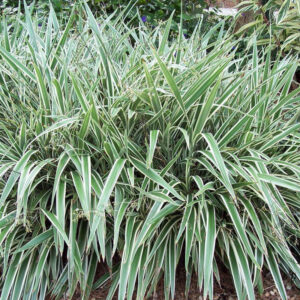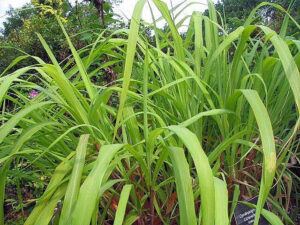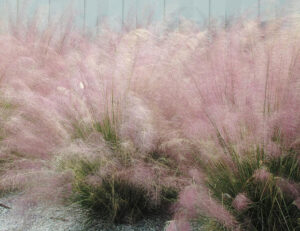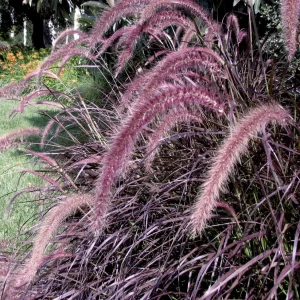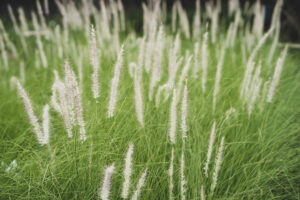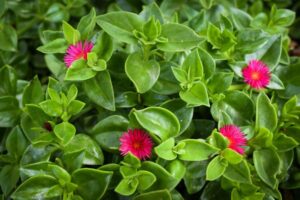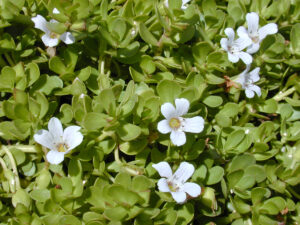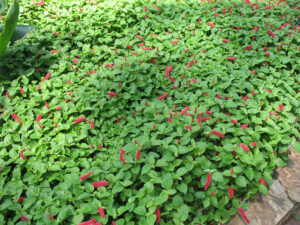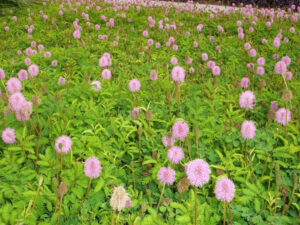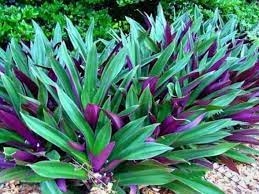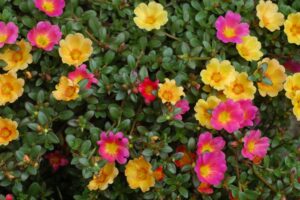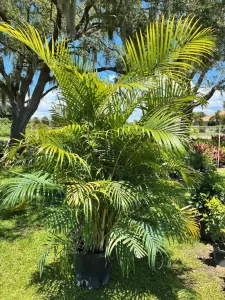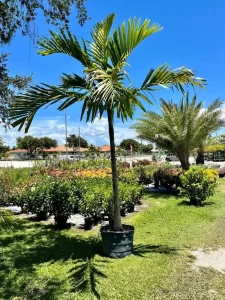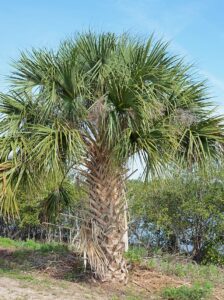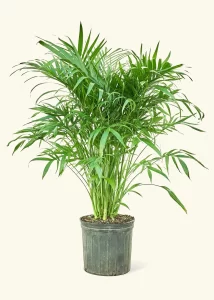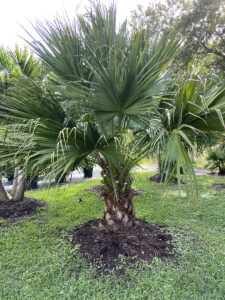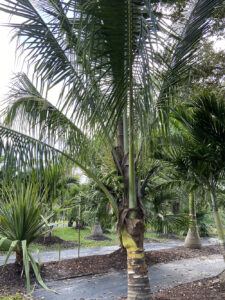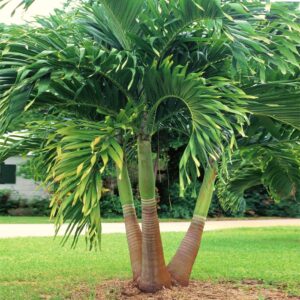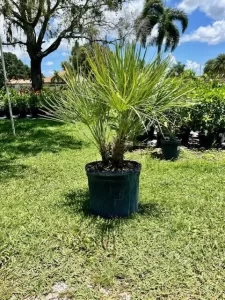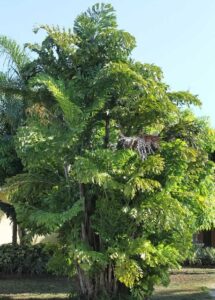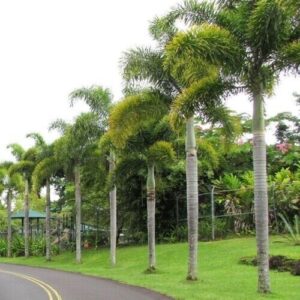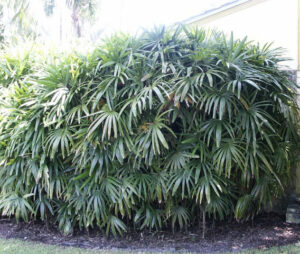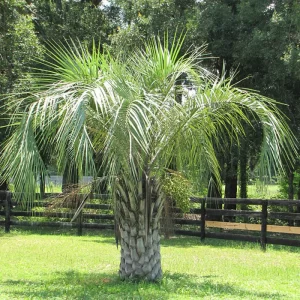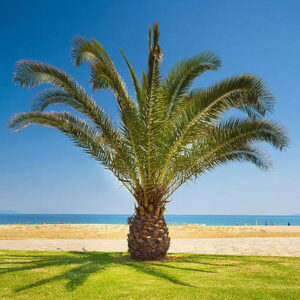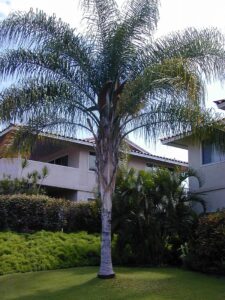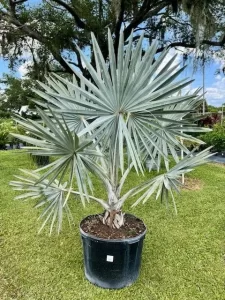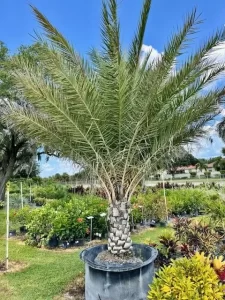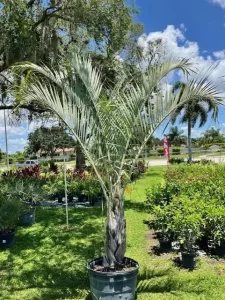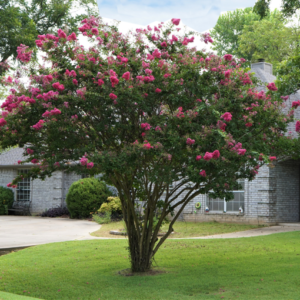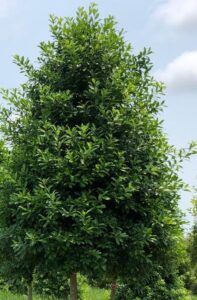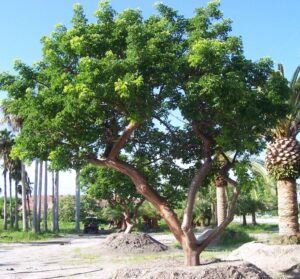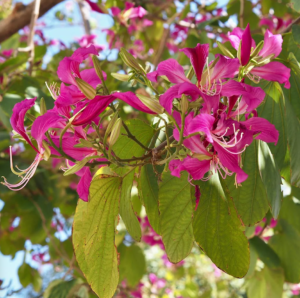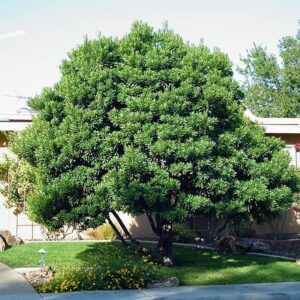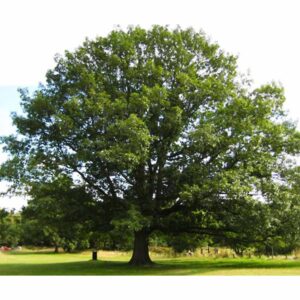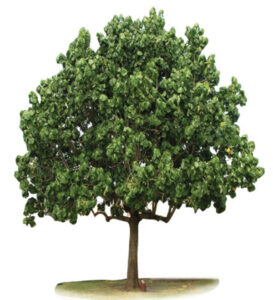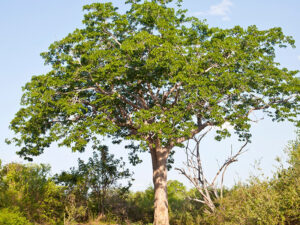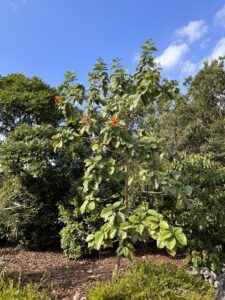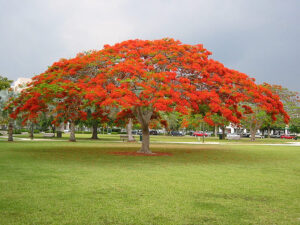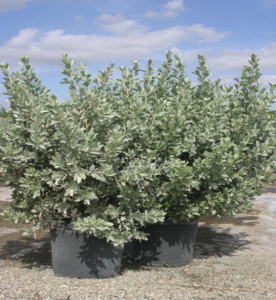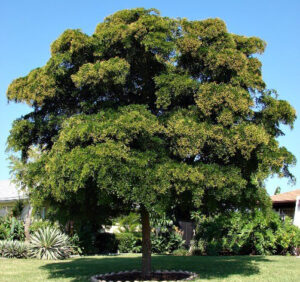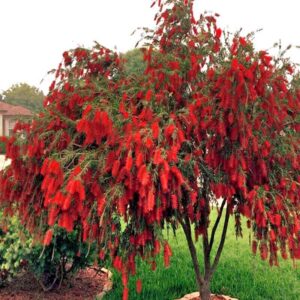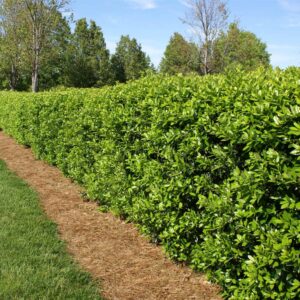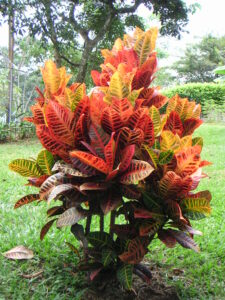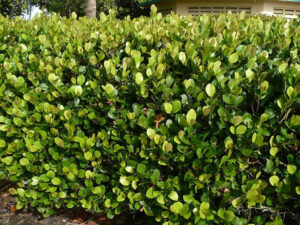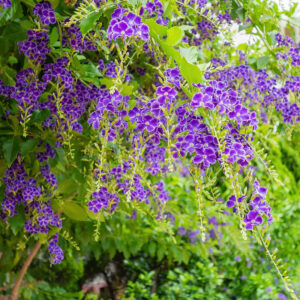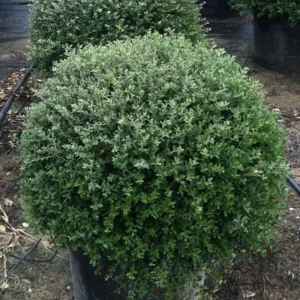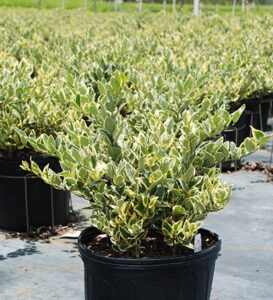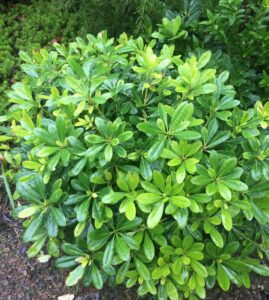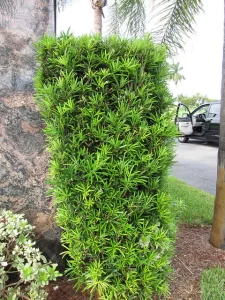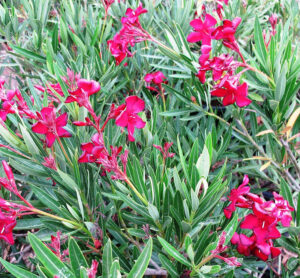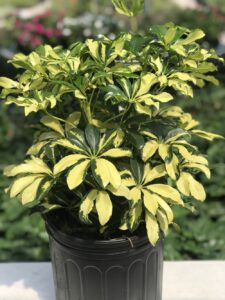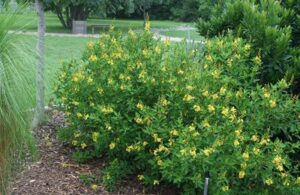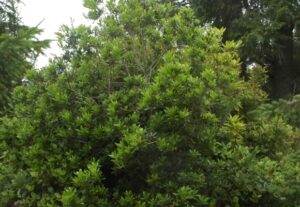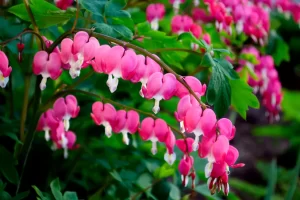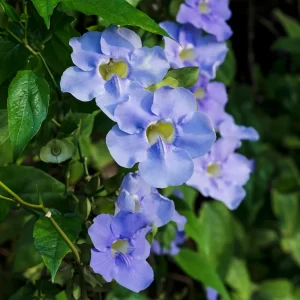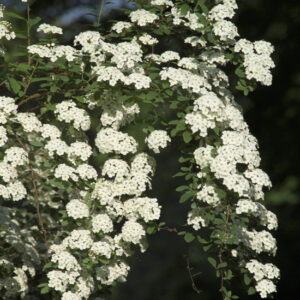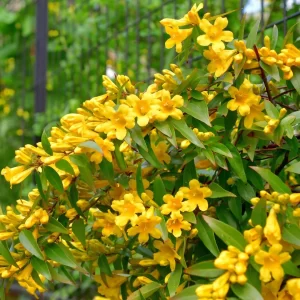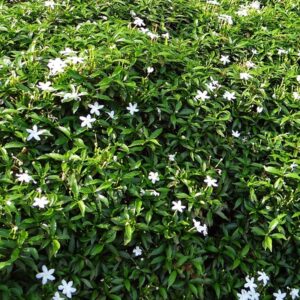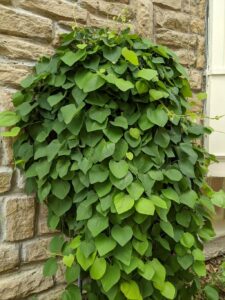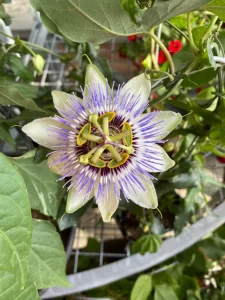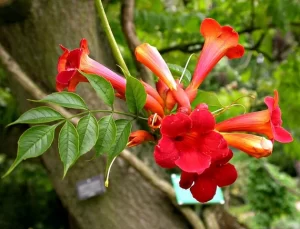PLANT CATALOG
Citrus limon 'Eureka' - The Eureka Lemon tree produces an abundance of fine, market-quality fruit year-round. Large, juicy lemons with very few seeds are borne at an early age. The Eureka is an attractive landscape or patio plant with bronze-purple new growth.
Home chefs love having fresh citrus on hand for cooking, baking, cocktails, and lemonade. Eureka lemons are the kind you’re most likely to find in your grocery store. These lemons have a sour, tangy flavor. By comparison, Meyer lemons are more fragrant and a little sweeter, whereas Eureka lemons are larger and more tart.
Citrus limon 'Harvey' - The Harvey Lemon Tree will make an attractive addition to your landscaping. Only reaching a height of about 14 feet without pruning, the tree’s bright green leaves and vibrant fruit create a tropical feeling even in colder places.
Harvey Lemons are particularly desirable, too, with their limited seeds and high juice content. What’s more, this hardy tree even avoids diseases that commonly befall other lemon trees.
Citrus aurantifolia Swingle - Key lime is a small, bushy tree, rarely taller than 12 feet (4.1 m). It has slender branches armed with short to medium-length thorns. Spineless selections are more compact and upright in growth, have darker green foliage, and are characterized by low fruit production.
Fruits are small, 1 ½ to 2 inches (38–51 mm) in diameter, round to oval with 10–12 segments around a small, solid axis. The peel is thin, smooth, leathery, greenish and yellow at maturity. The pulp is greenish-yellow, juicy, and highly acidic with a distinctive aroma.
Citrus × meyeri 'Improved' - The irresistible fresh aroma of Improved Meyer lemons can be enjoyed with ease! This shrubby citrus tree is the hardiest of all lemon trees and has been improved to be virus-free, vigorous, and productive. You can now have fresh and juicy lemons right at your fingertips. The Improved Meyer lemon trees have beautiful flowers that bloom intermittently throughout the year and develop into medium-sized fruit with a thin yellow rind. This attractive tree can also be grown indoors making it an excellent container plant.
- Hardiness Zones: 8-11; Indoors for zones 2-7
- Enjoy irresistible fresh juicy lemons
- Delicious fruit for juice, baking, desserts, and more
- Charming flowers intermittently throughout the year
Citrus sinensis - The Navel Orange produces ripe, naturally sweet fruit early. You'll get fruit in the next year or two. As your tree matures, it will produce larger and larger oranges.
Navel Oranges are low-maintenance citrus trees that adapt to various soil conditions. They even tolerate a light frost!
Citrus latifolia - With the Persian Bearss, you get a distinct flavor, delicious, seedless fruit, and a great patio plant that will produce limes right in your yard! It grows happily in a container, so, no matter your climate, you can grow a hardy tree that's drought-tolerant and pest-resistant.
Also known as the Tahiti Lime or Bearss Lime, the Persian Lime is the most popular lime around…and for good reason. Trademark lime-green fruit, dripping with citrus flavor, will grow right on your tree. Persian Limes combine the savory blend of Key Lime and lemon but without the seeds, bitterness, or acidity. Its full size practically weighs down the branches, giving you an unbeatable lime.
Citrus x paradise 'Ruby Red' - The Ruby Red is America's favorite grapefruit. If you enjoy the flavor and health benefits of grapefruit but dread the tedious work of cutting it up and removing the seeds, then you'll love this grapefruit tree. The fruit is seedless, easy to peel, and prepare, and you can now harvest right from home.
Plus, it grows when many other varieties are dormant. You'll get an abundance of sweet grapefruits during the winter months. And the Ruby Red Tree is amazingly fruitful, rewarding you with a lifetime of plump, seedless citrus.
Citrus x tangelo 'Minneola' - The Minneola Tangelo Tree is a citrus fruit tree known for its sweet and juicy bell-shaped fruit. The tree is a hybrid of a Dancy tangerine and a Duncan grapefruit and is a popular variety for both commercial and home growers. The fruit has a unique shape, resembling a grapefruit but with a distinctive "nipple" at the top giving it a bell shape earning the fruit the nickname “Honeybell”. Its skin is reddish-orange and easy to peel, and the flesh is juicy and tangy-sweet.
The Minneola tangelo tree is a vigorous grower and can reach a mature height of 10-15 ft. It is cold hardy and can be grown in most climates. The tree is self-fertile, so no need for another tree for cross-pollination, however, yield can be increased with an additional pollinator. The fruit is typically ready for harvest in late fall through early winter. The Minneola Tangelo Tree is an excellent choice for those looking to grow delicious citrus fruit in their backyard.
citrus sinensis ‘Valencia’ - The Valencia orange is valued for its sweet-tart taste, juiciness, and the beautiful bright orange color of the juice squeezed from it.
This citrus tree ripens in the summer, which is unusual for orange trees, and may bloom again while fruit remains on the tree. This can allow for multiple harvests. Ripe fruit can be left on the tree and harvested as desired, rather than needing to be harvested immediately.
This is a sweet orange, citrus sinensis ‘Valencia’, as opposed to a bitter orange. The origin of this variety is disputed, but it was named after the city of Valencia in Spain, which is known for its orange production.
Dietes iridiodes - The African Iris flowers are unique and striking, blooming primarily in spring and summer and periodically throughout the winter. Younger plants are flowerless, but within 2 years of its initial planting, the African Iris will begin to flower year-round. Although the flowers are short-lived, they are numerous; with each stalk producing a large supply of buds.
Agapanthus orientalis - Agapanthus is a summer-flowering bulb for Southern gardens. Sometimes called African lily and lily of the Nile, it is originally from South Africa. Agapanthus makes an elegant addition to any landscape. Its strap-like leaves make an excellent ground cover and its conspicuous flowers bloom all summer long.
Agapanthus can bring fresh shape to your cut flower garden. It will liven up a Florida-friendly landscape by attracting hummingbirds and other pollinators. The blooms are absolutely unique and make a wonderful display in mass plantings.
Allamanda cathartica - An evergreen tropical climber with large, deep yellow trumpet flowers and glossy green leaves. Native to Brazil, its flowers are visited by bees, sunbirds and butterflies. Allamanda makes a lush addition on trellises or fences in parks and gardens and flowers freely all year.
Neomarica spp. - Apostle Iris is a clumping herbaceous perennial with long, glossy green leaves and small, iris-like flowers. The flower color will vary depending on the species; they can be white, yellow, or blue-purple. Apostle Iris sports interesting flowers, with outer petals that spread almost horizontally.
As they grow, the stalks bend to the ground and the plantlet takes root. Eventually, the new plant will repeat the same process. In this way many walking iris plants “walk” through the landscape.
Wrightia antidysenterica - Asian snow blooms with small white flowers all year long. This well-behaved plant requires very little trimming and keeps a neat shape. It can take full sun or part-shade and will grow to five to six feet tall. Asian snow is great for containers and small spaces in the landscape.
The Asian Snow Bush produces fragrant sprays of delicate, snow-white blooms. This well-mannered little bush needs little to no pruning to keep its tidy appearance.
Hibiscus syriacus - Hibiscus is a large genus of flowering plants in the Malvaceae or mallow family.
They prefer a sunny location and well-drained soil that contains plenty of organic matter. Hibiscus will tolerate light shade and less desirable soils, but their vigor and flowering will be reduced. Plenty of water is necessary for the most abundant blooming. Newly planted hibiscus will need more frequent watering, similar to other newly planted perennials.
Begonia
Begoniaceae - For beautiful foliage and a constant display of color throughout the season, grow begonias. Begonias are grown for their foliage and or attractive flowers. Some begonias, such as wax begonias and newer hybrid begonias, will continually flower throughout the summer. They can be used as bedding plants and in window boxes, hanging baskets, and other containers. Another benefit of planting begonias is that they are deer and rabbit-resistant.
Strelitzia reginae - Bird of Paradise is a striking evergreen plant with blue-green foliage and showy orange and blue blooms that resemble a bird in flight. Its drought tolerance and pest resistance make it a favorite low-maintenance tropical plant.
The ideal planting location will have fertile, well-drained soil that is high in organic matter. It should have partial shade with minimal salt (light spray is tolerated). Plants grown in part shade will grow taller and have larger flowers than those planted in full sun. If you are going for a dramatic landscape feature, space your plants about six feet apart to allow room for the flowers.
Plant bird of paradise in a groundcover or in front of a shrub border to highlight the blue tones in its foliage against the green shrubs. It is also ideal for planting next to pools and patios since it doesn’t tend to cause leaf litter.
Rhaphiolepis indica, the Indian hawthorn
Indian Hawthorn is popular as an ornamental plant in gardens and landscapes due to its attractive foliage and colorful flowers. It can be grown as a standalone shrub or in hedges and borders. It prefers well-drained soil and a sunny to partially shaded location. The Indian Hawthorn plant typically blooms in spring, producing numerous flowers in tight clusters. The flowers have a pleasant fragrance and are attractive to pollinators like bees and butterflies.
Plumbago auriculata 'Imperial Blue' - Growing in billowing drifts with breathtaking flowers, blue plumbago is an easy-care, showy shrub with cottage garden appeal.
'Imperial Blue' is the most popular cultivar, with butterfly-attracting blossoms in vibrant blue with a hint of violet.
Callistemon spp. - A popular drought-resistant perennial, this unique shrub produces bottle-brush like bright red blooms and attracts hummingbirds!
Some bottlebrushes are naturally dense and compact making good informal hedges; others are sparse and open (they can be pruned up to become small trees).
Bougainvillea 'Elizabeth Angus' - Bold, in your face color and impressive form, the Elizabeth Angus Bougainvillea is a heat-loving flowering shrub that displays vivid purple flower-like petals, called bracts, that smother these plants! Forming upright vining stems and multiple climbing branches, these plants can be kept as climbers, trained into an ornamental tree form, or pruned as a low-growing shrub.
These broadleaf evergreens offer year-round color with their glossy deep green leaves and become especially lit up when the dramatic three-petaled bracts form! Each is highlighted by a pale yellow stamen in the centers, no one will be able to take their eyes off them each year! These lovelies bloom throughout the spring, summer, and fall because of the long-lasting bracts!
Fast-growing Elizabeth Angus is evergreen throughout USDA growing zones 9 through 11, and tolerates almost any warm climate condition, moderately moist soil, and loves the heat and sun! Botanically a vine, these form woody stems that can be trained into trees and shrubs with some pruning. Growing into an 8-12 feet mature height and a 4-6 foot wide woody vine!
Bromeliaceae genera - Bromeliads, with their rigid and often colorful rosettes combined with futuristic-looking flowers, are one of the more fascinating houseplants. Bromeliads need to mimic their native climate range and weather. Their care also hinges upon how the plant gathers moisture and nutrients in the wild.
Bulbine has become a popular plant in Florida because it is drought tolerant, grows well in poor soils, and blooms repeatedly with cheerful flowers that are yellow or orange, depending on the variety.
The succulent, grass-like foliage grows to about a foot tall, while the flower stalks typically reach two feet, dancing above the leaves throughout the summer months.
This plant offers clumping succulent foliage and tall flower stalks that bloom with yellow flowers from spring to fall. Bulbine grows 12-18" tall and 12-24" wide, spreading by rhizomes for even more plants to divide and replant.
Calibrachoa Solanaceae - Calibrachoa plants are annuals known for their small, colorful flowers that bloom all season with little maintenance. Grow calibrachoas in pots, hanging baskets or window boxes.
These fast growers are annual in colder climates and short-lived perennials in warmer regions. They are also deer-resistant, making them a great choice for gardeners who struggle with deer nibbling on their plants.
Despite their delicate appearance, these tiny petunias are quite hardy and can withstand a range of conditions, including partial shade and frost.
Canna glauca - This vibrant plant adds tall, tropical scenery to a landscape! Flashy and flamboyant, canna lilies are perennial flowers that thrive in the heat of July and August.
This flowering perennial plant is related to bananas and gingers! This may not be surprising when you consider their huge paddle-shaped leaves.
Tecomaria capensis - Like jewelry for your yard, gorgeous cape honeysuckle is a show-stopper with its stunning clusters of trumpet-shaped orange blossoms and fern-like foliage.
This wide-spreading shrub blooms on and off all year, and makes a fabulous flowering hedge that attracts butterflies and birds including hummingbirds.
Tibouchina urvilleana - This sprawling, evergreen shrub or small ornamental tree ranges from 10 to 15 feet (20 feet with proper training) in height. It can be trimmed to any size and still put on a vivid, year-long flower display. The dark green, velvety, four to six-inch-long leaves have several prominent longitudinal veins instead of the usual one, and are often edged in red. Large, royal purple blossoms, flaring open to five inches, are held on terminal panicles above the foliage, creating a spectacular sight when in full bloom.
Clerodendrum quadriloculare - Fast-growing starburst clerodendrum grows well in zones 9b to 11 and can be used as a shrub or tree. Typically reaching a height of 15 feet, this plant is most eye-catching in mid-winter and early spring when its showy tubular flowers—white-tipped and pink below—appear in large clusters. Hummingbirds and long-tongued butterflies love to visit these tubular flowers for their sweet energizing nectar.
The rest of the year, it’s the foliage that’s the point of interest. The topsides of the leaves are green, with just a tinge of purple, while the undersides are a glossy, deep purple.
Coleus Lamiaceae - Known for its colorful foliage, Coleus is a wonderful, low-maintenance plant that adds color to outdoor containers. Take cuttings in the fall to keep this tender annual growing through winter.
Although coleuses have square stems like other members of the mint family (Lamiaceae), they display none of their cousins’ invasive qualities.
Also known as flame nettle, painted nettle, and painted leaf, coleus is a winter-hardy herbaceous perennial in Zones 10 and 11 that is treated as an annual elsewhere.
Viburnum spp. This is a genus of popular flowering perennial landscape shrubs, with more than 150 varieties available. They bloom in spring, followed by attractive fruit and outstanding fall foliage. Fast-growing viburnums can grow one to two feet per year. These plants can be used as hedges, ground cover, a privacy fence, and more.
There is no single type of viburnum foliage. Leaves can be rounded, lance-shaped or toothed, smooth, velvety, or rough. There are multiple types of viburnum flowers, too: flat clusters of florets, flat umbels outlined with larger flowers, and dome-shaped, snowball-like clusters.
Coreopsis floridana - Coreopsis is a sunny flower that graces roadsides, fields, and many gardens across the United States. This native perennial is also Florida’s state wildflower.
Commonly known as tickseed, coreopsis comes in many species and varieties. Most are daisy-like with a ring of yellow petals surrounding a brown or yellow center. They typically bloom in spring and summer.
Coreopsis naturalizes easily and attracts many butterflies and birds to your garden. Bright and cheery, they make great cut flowers.
Crinum spp. - A giant lily like this can be the centerpiece of your landscape. Already impressive in size and growth habit, it occasionally tops it off by producing a long stem with an enormous flower.
Crinums bloom on and off all year. They widen at the base with their many suckers or "pups" - baby crinums - that you can remove or leave in place.
The most common in home landscapes is the white flowering variety (Crinum asiaticum) which grows to about 5 feet tall. This plant's flower is pure white and sweetly scented.
Crossandra infundibuliformis - The Crossandra is a beautiful and easy-to-care-for annual plant ideal for adding color to your garden or patio. With lovely clusters of orange flowers and glossy, dark green foliage, Crossandra effortlessly brings tropical flair to any landscape.
With its bright orange, yellow, salmon, and pink flowers, it's grown as a perennial in warmer climates.
They attach to long, upright stems and have five asymmetrical petals overlapping, creating an attractive, compact color display. Crossandra’s flowers are very delicate and easily damaged by rain.
Euphorbia milii - The bushy, spiny succulent develops shoots that can reach up to three to four feet in height, with a two-foot spread. It has half-inch thorns that adorn its branches and stems. The tough, leathery foliage grows on slender, young stems. Its leaves may defoliate if moisture stressed or with extreme temperature changes. The plant blooms intermittently throughout the year, but flowers are more prolific in the spring. Small flowers are surrounded by attractive bright red or pink bracts.
Adenium obesum - Desert rose is a low-maintenance succulent that produces dozens of trumpet-shaped flowers in shades of pink, rose, or white in the summer. Like many succulents, it needs conditions that are bright, warm, and dry.
Desert rose and its many hybrids are often seen in retail garden centers. Flowers average 2–3 inches in diameter and may be single, double, or even triple. To maintain the profuse flowering, the plants must six hours or more of bright light each day.
Mandevilla spp. - Classic mandevilla bloom with a compact, manageable growth habit. Attracts butterflies and hummingbirds. Very heat tolerant.
The plant thrives in containers, landscape beds, and borders. Because it's relatively drought tolerant, is an excellent pick for busy or forgetful gardeners who may forget to water from time to time during the summer.
Calliandra haematocephala ‘Nana’ - This is a slow-growing, dwarf variety producing coppery pink new foliage that matures to dark green; showy red powderpuff blooms in fall and winter, with some blooming year-round.
One of the most picturesque red flowering plants, this shrub fits nicely in any size South Florida yard. This charming shrub attracts hummingbirds and butterflies and works in almost any light - providing color even in partly shaded beds.
Easy to care for, Euryops 'Bush Daisy' thrives in full sun and well-draining soil. Prune regularly to encourage bushy growth and deadhead spent flowers to promote continuous blooming.
A versatile and low-maintenance plant, Euryops 'Bush Daisy' is a delightful addition to any garden.
Hamelia patens is a large evergreen perennial shrub or small tree in the family Rubiaceae, that is native to the American subtropics and tropics. Its range extends from Florida in the southern United States to as far south as Argentina. Common names include firebush, hummingbird bush, scarlet bush, and redhead.
Firebush is one of Florida’s best plants for attracting butterflies and birds. It can be used as a specimen plant or in a border or mass planting. It is relatively tolerant of salt and wind and is a moderately fast grower. Plant in full sun for best flowering or more shade for attractive flowers.
Russelia equisetiformis - The Red Firecracker Fern produces loads of 1" showy red tubular flowers born in large loose clusters along the arching ferny stems throughout the warmer months of the year or nearly year-round where winters are mild. Excellent for Hummingbirds!
Firecracker plant can reach three to four feet tall and six or more feet wide, so be sure to give it room to sprawl. However, it is a tender plant, so be sure to cover it when cold weather strikes. Or you can let it freeze back and see if it rebounds in the spring.
This Florida-Friendly plant is relatively pest-free and somewhat drought tolerant, although it will flower better with regular irrigation.
Odontonema cuspidatum - Firespike adds a big pop of red to the garden, making some gardeners suggest that it’s the equivalent of red salvia on steroids.
Firespike grows 4 to 6 feet tall and produces clusters of 3-inch-long, tubular red flowers. It is a small shrub in South Florida and a clumping, herbaceous perennial in North and Central Florida.
The foot-long spikes of showy flowers appear year-round in South Florida and during fall and winter in North and Central Florida. They attract hummingbirds and several species of butterflies that feed on the nectar.
Gaillardia pulchella - Also known as blanket flower, it is a sturdy perennial with bright flowers that bloom throughout the summer and into the fall.
Still, blanket flower is an excellent nectar and pollen resource. It also remains on our list of Florida-Friendly plants. But for gardeners who prefer native wildflowers, consider lanceleaf blanketflower (Gaillardia aestivalis). This wildflower has much of the charm of G. pulchella and is native to North and Central Florida.
The flowers are single, semi-double, double, and even tubular, and grow on long stems above the long, soft, hairy leaves. They are usually reddish purple or orange-red with yellow tips, but can also be solid yellow, orange, or red, and make excellent, long-lasting cut flowers that attract butterflies.
Gardenia jasminoides - Fragrant pure white blossoms, nearly 2 to 3 inches across, meet carefree growth, setting the August Beauty Gardenia apart. In fact, this no-nonsense shrub will bloom for up to three months at a time, signaling the season in the most fragrant, luscious way.
Keep the soil moist, but not saturated, especially in summer and in the first year after planting. After the first year, it is best to allow the soil to begin to dry out in between watering. In very dry and hot environments, misting your gardenia's leaves daily or every other day will keep your plant happy.
Pelargonium spp. - The geranium is a popular and attractive flower. Their bright red, white, or pink flowers can be used to fill a bed or combined with other plants for colorful accents.
Geraniums grow best in full sun, but will tolerate partial shade. Remove old flowers to keep new ones coming. Geraniums prefer well-drained soils. Work a three- to four-inch layer of organic matter such as compost or peat moss into the soil when planting.
Gomphrena (also known as globe amaranth) is the cutest little flowering plant you’ve ever seen. Little brightly colored gumdrop-like flowers at the end of long straight stems make a very unusual but enjoyable plant in the garden and in the vase.
It works well in the front of the border of a garden, with its beautiful coloration adding punch and colorful interest to any planting combination.
Spathoglottis plicata - Ground Orchids have long, green leaves that will fill up any space in your landscape. They are a great choice if you would like flowers in a shady spot.
Rather petite, this orchid is eye-catching in its way with small, gem-like flowers. The palm-like foliage is deep green, pleated, and up to two feet long. This emerald backdrop provides an appropriate setting for the small clusters of purple, pink, and yellow flowers.
Oenothera lindheimeri - Gaura, also known as apple blossom grass, wand flower, and whirling butterfly, is a beautiful, delicate addition to your flower gardens and containers.
Butterflies will flock to your garden when you include gaura in your flower borders or containers. This sun-loving North American native plant is used as a perennial in warmer parts of the country and as an annual in colder regions. Gaura is heat and drought-tolerant and can handle high humidity with ease.
Heliconia psittacorum - Heliconia is an erect, evergreen, rhizomatous perennial that is cultivated as an ornamental garden plant in warm, sub-tropical and tropical climates.
It produces vibrant, upward-pointing, large green leaves and pseudostems that are quite thin and erect, bearing an inflorescence of flowers at the top.
They are a brightly coloured, waxy bract that forms a shell shape around the paler coloured flower and are quite spectacular being brightly coloured in shades of orange, gold and red.
These are nectar-rich blooms and attract a throng of birds and insects to your garden.
Impatiens are one of the rare annual plants that will provide colorful blooms in shady gardens—so they’re also perfect for hanging baskets or containers on porches.
Impatiens are very popular as both a bedding and hanging plant. Also called “Busy Lizzies,” these beauties are low-maintenance and don’t even need pinching! The genus name, Impatiens, is a Latin word describing how its seeds shoot out of its pods when ripe (the slightest touch can make a ripe impatiens seed pod burst open and scatter its contents).
Ixora spp.
The old South Florida favorite ixora is a year-round flowering plant that shouldn’t be put into the old-fashioned category. This sun-loving shrub bears clusters of four-petaled flowers in Central and South Florida.
One of the best things about ixora is that it flowers throughout the year! Each flower cluster can last between 6 and 8 weeks giving your landscape long-lasting and lovely color. Ixora varieties offer a nice selection of colors including bright red, orange, yellow, pink, and white.
The leaves of this tropical perennial are bronze when young and shift to glistening dark green as the plant ages. A compact, densely branching shrub, Ixora is ideal for planting as a hedge, border, screen, or featured specimen—depending on which variety you select.
Jasminum sambac, commonly called Arabian jasmine, is probably native to India or Southeast Asia where it is a broadleaf evergreen shrub. On a support, it grows as a twining shrubby vine. Unsupported, it grows as a sprawling shrub. Plants feature small, waxy, white, salverform flowers (1” diameter) in clusters (cymes) of 3-12 blooms on downy stems clad with broad-ovate, dark green leaves (to 3” long). Flowers are exceptionally fragrant.
Jatropha integerrima - Jatropha is a non-native, Florida-friendly, evergreen shrub or small tree that attracts butterflies and hummingbirds with its showy red flowers that bloom almost all year round. It grows in full sun to partial sun, and dry to average soils. Parts of this plant are poisonous to people and pets.
Rosa ‘Radrazz’ - Knock Out® roses can be grown throughout Florida and will bloom practically year-round in most of the state. They are drought-tolerant, self-cleaning, and resistant to black spots and powdery mildew.
Since they require little maintenance, they are ideal for gardeners who enjoy roses but who aren’t interested in the upkeep required to grow hybrid tea roses.
Common lantana is an annual or perennial, small, broadleaf evergreen shrub in the Verbenaceae (verbena) family with woody stems but a sprawling habit. It is 1 to 6 feet high and 3 to 5 feet wide.
Lantana prefers full sun in moist, well-drained soil, but will tolerate poor soil and drought. It is known for its salt tolerance.
The showy flowers – attractive to butterflies, hummingbirds, and other pollinators – appear from midsummer until the first frost and come in a wide range of colors.
Loropetalum chinense - Loropetalum is an evergreen shrub that looks good in just about any Florida garden. Also known as Chinese witch hazel or Chinese fringe flower, loropetalum puts on a beautiful show in spring with small, frilly flowers, typically pink.
With its moderate growth rate, it works well as a screening plant, hedge, or border. It’s often used as an accent plant for its beautiful floral display.
Tagetes spp. - Marigolds are the ultimate companion flower. This cheery annual attracts all manner of pollinating insects into the garden. They’ll bloom for months, too. Learn all about sowing and growing marigolds.
An annual flower, marigolds are the spendthrifts among annuals, bringing a wealth of gold, copper, and brass into our summer and autumn gardens.
Marigolds are a great companion flower to tomatoes, especially greenhouse-grown tomatoes, as their scent helps to deter whiteflies. Dwarf types make good edging plants that may deter rabbits, so include marigolds when you plan your garden.
Cuphea hyssopifolia - Mexican Heather is a little shrub with recurring blooms that can withstand both heat and drought. Small, lavender blooms will cover the entire plant year-round.
Reblooms continuously, well into fall. Good for edging and seasonal color in beds and borders. A popular container plant for pots and baskets. Semi-evergreen.
Ruellia simplex - Mexican petunia is an attractive blue- to purple-flowered perennial available at some garden centers. Gardeners have traditionally used Mexican petunia to add height to perennial borders since it can grow up to three feet tall.
However, in Florida, Mexican petunia (Ruellia simplex*) has been classified as a highly invasive plant. Their underground rhizomes can become difficult to manage in ideal growing conditions, and these plants also spread via seeds.
Asclepias syriaca L.
The name "milkweed" refers to the milky latex contained within the leaves. Most species are toxic to vertebrate herbivores if ingested due to the cardenolide alkaloids contained in the leaves and stems. Milkweeds are perennial plants, which means an individual plant lives for more than one year, growing each spring from rootstock and seeds rather than seeds alone.
This milkweed grows to about 1.5 meters(5 feet) tall, usually occurring in clusters of stout stems. It has rhizomes and quickly forms colonies. Common milkweed is Nature's mega food market for insects.
Known for its showy red, orange, and yellow flowers in summer. There are concerns that this milkweed discourages the Western monarch butterfly from following its natural migration from October to late March and is thus harming the butterfly population. Some monarchs will stay in California since it won't freeze and food is available. The best horticultural practice is to cut back tropical milkweed from October to January to help the plant "hibernate" for winter and encourage monarch migration.
Mussaenda is a popular landscape plant for South Florida gardens and landscapes. They are classified in the family Rubiaceae with Ixora, coffee, pentas, and Firebush. Most are large tropical, evergreen, or semi-deciduous shrubs with an open habit. The leaves are opposite of each other on the stem, bright green, deeply veined, and oval to elliptic in shape.
Mussaenda is one of the most sought-after tropical shrubs because of its tremendous beauty, displayed by highly colored flower bracts that bloom throughout the warmer and hotter months of the year.
Nerium oleander - Oleanders are distinctive and beautiful, large, flowering shrubs that thrive with little care. They are very heat and drought-tolerant once established, and will grow especially well in seaside gardens, tolerating salt spray and wind. Oleanders generally grow best in the coastal areas of South Carolina.
Oleander is extremely poisonous*. Eating even small amounts of any part of the plant can make a person or animal severely ill or cause death. Contact of sap with skin may cause irritation. Smoke from burning cuttings can cause severe reactions.
Rondeletia leucophylla - Easygoing Panama rose blooms nearly year round with bright pink flower clusters that attract butterflies.
The flowers have a light daytime scent which grows stronger in the evening, so they're especially nice planted near a patio or other area where you can enjoy the fragrance after the sun goes down.
One of the most consistent flowering bushes, this shrub makes a great accent plant, mid-height hedge along a fence or property line, or a colorful addition to a garden bed of butterfly plants.
Pentas lanceolata - Imagine flocks of colorful butterflies and hummingbirds visiting your garden all summer long! That's what you'll get when you add pentas to your garden plan. Pentas develop sparkling star-shaped flowers all summer long in bold hues of red, white, lavender, purple, or pink. Pentas is a sun lover that grows 18 to 36 inches tall. In most parts of the country, pentas is considered an annual, but in very warm regions, pentas is perennial in nature.
Petchoa spp. - Marigolds are the ultimate companion flower. This cheery annual attracts all manner of pollinating insects into the garden.
Most petchoa varieties have a mounding or trailing shape, making them versatile and perfect for both container gardens and landscaping. In pots, use them as lovely filler plants to add color and texture, or as spiller plants, to cascade over the side of the container.
Pretty petunias are popular because of their exceptionally long flowering period. As with most annuals, they get leggy by midsummer, so you’ll want to prune the shoots back by half.
These colorful annuals can add pop to a front lawn and are often used in borders, containers, hanging baskets, or even as seasonal groundcovers. Some even have a slight fragrance. Their height can vary from 6 inches to 18 inches, and they can spread along the ground anywhere from 18 inches to 4 feet.
Salvias are excellent plants for bringing butterflies and hummingbirds to your garden and as a bonus, they have no serious pests. With hundreds of annual and perennial species coming in an array of colors and sizes, there’s a salvia for almost any landscape.
Salvias are at home in mass plantings, borders, and even containers; their loose and natural growth pattern makes them especially well-suited to cottage gardens. The slender, tubular blooms of these plants will last for several days in a vase indoors, making them a good choice for a cut-flower garden.
Dodecatheon Meadi - The shooting star plant is a lovely perennial wildflower. It is commonly found in North America, but one of its many species is found in Siberia. Because of their beautiful flowers, most of their species are often cultivated in rock gardens.
This plant comes in either pink, red, white, lilac, or purple, growing in a small cluster at the stalk in a rosette. Their flowers are often downward pointing, whereas the petals form five lobes that are turned towards the back.
Justicia brandegeana - Shrimp plants are known for their lush foliage and intricate blooms. They typically reach 3 to 4 feet and can spread to a similar width. Their leaves are elliptical and deep green, creating a stunning backdrop for the striking flowers.
These flowers, shaped like shrimp, can grow up to 2 inches long and are grouped in dense spikes. Their unique appearance is a magnet for pollinators like hummingbirds and butterflies, adding a touch of wildlife to your garden.
Scaevola, also known as Fan Flower, is a trailing plant that produces masses of fan-shaped flowers, typically in shades of blue, purple, or white. Its cascading habit makes it perfect for hanging baskets, window boxes, or as a colorful ground cover.
Scaevola is known for its heat tolerance and long blooming period, providing continuous color throughout the summer. This low-maintenance plant thrives in full sun and prefers well-draining soil with moderate watering.
Tulbaghia violacea - Society garlic is a groundcover that produces delicate, star-shaped purple flowers. These perennial plants grow to about a foot tall and are wonderful in borders or mass plantings.
Society garlic is a clump-forming herbaceous perennial with narrow, grass-like green leaves and clusters of small lilac flowers. Leaves reach about a foot tall and flowers rise up on stalks about two feet tall. The tubular flowers open up at the end to look like six-pointed stars.
Sun Hosta is a medium-sized variegated hosta that performs best in the full sun and hot, humid conditions of the Southeast. Plants will best express their white variegation in full sun. SunHosta has very low cold requirements compared to other hosta varieties. It will stay vegetative under short days during winter months in South Florida
Aloysia virgata - This sweet almond bush is a fast-growing, fragrant shrub that does well in part shade to full sun and requires a decent amount of water in the first couple years after planting. Without sufficient water, you will notice it doesn’t produce flowers and the leaves will start to curl around the edges.
This fragrant bush will attract many butterflies and bees to its many clusters of white flowers.
Leucophyllum frutescens - Texas sage dazzles with bright pink to lavender or white blooms after rainfalls from summer through fall. Once established, Texas sage thrives in rocky soil and rough conditions.
The Texas sage plant is remarkably easy to grow, low maintenance, and an excellent drought-tolerant selection.
Galphimia gracilis - Thryallis is a Florida-Friendly splash of color that we love to see in landscapes. If you’re looking for a low-maintenance, reliable shrub with a stunning floral display, this is the plant for you.
Thryallis’ foliage is a cheery green and remains evergreen in areas without a winter freeze. The stems of new growth are red and contrast beautifully during the beginning of the spring growing season. At the end of new shoots, eye-catching yellow flower clusters wave in the breeze.
Thunbergia alata - Despite its common name, it has no relation to the Black-Eye Susans (Rudbeckia hirta) plants in full sun with some afternoon shade, in rich, medium moisture, well-drained soils. As a twining vine, it does best with support so plant near an arbor, trellis, or fence, or consider admiring its trailing habit cascading from a hanging basket. It can twine among existing plants becoming a groundcover but can be more difficult to maintain this way.
Verbena bonariensis - Verbenas are long blooming annual or perennial flowers that possess the virtues of heat tolerance and an extremely long bloom season. Verbenas require a location that receives full sun throughout the day. They must have well-drained soil.
They grow as tall as 3 - 6 feet tall and 1 - 3 feet wide. This light, airy giant provides a soft, flowing backdrop for a layered bed.
Vinca is an easy-to-grow summer annual for beds, borders, edging, and containers. It prefers full sun, tolerates heat and drought, and can be relied on to flower in the hottest weather throughout the entire summer.
Improper pH may increase disease problems with vinca. It grows best in well-drained organic soils with a pH of 5.5 to 6.0 but will tolerate higher pH levels.
The spent flowers do not require deadheading to encourage more blooms or pinching to maintain a tidy growth habit.
An old favorite that works well in Florida gardens, zinnias are annuals with beautiful flowers that come in vivid colors like red, pink, yellow, and purple. In fact, this heat-loving flower comes in pretty much every color except blue.
Zinnias need full sun and well-drained soil. Once established, they’re drought-tolerant but will thrive with regular watering. Try to keep water off the leaves, though. Unlike many bedding plants, zinnias can handle Florida’s hot summers, and healthy plants will bloom throughout the summer.
Persea americana Miller - A medium (30 ft; 9.1 m) to large (65 ft; 19.8 m) tree, the avocado tree is classified as an evergreen, although some varieties lose their leaves for a short time before and during flowering. The tree canopy ranges from low, dense and symmetrical to upright and asymmetrical.
Malpighia glabra - Whether it's grown in the ground among other fruit trees in your garden or in a container on the patio, the Barbados Cherry will provide tons of delicious cherries each growing season and in just one or two years. It’s fast, low-maintenance and versatile because we’ve planted, monitored and shipped it to your door with absolute care, so you get a high-quality tree that’s consistent year after year.
Reaching a mature height of just 12 feet, the Barbados' convenient size and hardiness place it among the most adaptable cherry bushes available.
Ficus carica are fruiting plants that typically grow up to 8'-15' tall in Florida, though there are smaller-growing varieties. These figs are parthenocarpic, meaning that the fruits form without fertilization. Typically, the fruits ripen in July and October, and their size and taste vary according to the variety. The most recommended varieties for Florida are 'Celeste', 'Brown Turkey', and 'Ischia'.
Eriobotrya japonica - Loquat trees are evergreen, have a short trunk, and may reach 20 to 35 ft in height. They have a rounded to upright canopy.
A strikingly beautiful, small to medium size evergreen tree, Loquat features long, dark green, deeply toothed foliage and tasty, light orange, apricot-like fruit. Loquat is very happy in the Maritime Northwest, although its pesky habit of blooming in the winter makes it difficult to produce fruit in our region. Loquat’s ornamental value makes it well worth growing and, depending on the winter weather, you should occasionally receive a crop of this unusual and delicious fruit.
Mangifera indica L - Mango trees can grow well in Florida's tropical and subtropical climate, especially in the warmest areas of the state along the southeast and southwest coasts. They can also be grown in protected locations as far north as Merritt Island and along the southeast and southwest shorelines of Lake Okeechobee.
Trees are evergreen, with a symmetrical, rounded canopy ranging from low and dense to upright and open. In general, tree size is more easily managed to maintain a low stature (height and width) while maintaining good fruit production than more vigorous varieties.
Psidium guajava ‘Tropic Pink’ - Pink Guava is one of the most delicious and attractive fruits you can grow. Reminiscent of a small watermelon, the fruit’s yellow-green rind protects a tasty pink flesh with small seeds. The fruit tastes like a unique blend of strawberry and pear!
The Tropical Pink Guava Tree itself is eye-catching even between its twice-annual fruiting seasons. This tree can reach 15 to 20 feet at maturity, but can also be pruned into a bush perfect for containers. In fall and spring, the tree blooms with fragrant white blossoms.
Averrhoa carambola L. - Star fruit is a tropical tree and grows in warm and hot temperatures. Although they can grow in subtropical areas that experience only occasional freezing temperatures. The best temperature to grow star fruit is 68° to 95°F.
The star fruit is a rich source of vitamin C, B9, B6, B2, and dietary fiber. It also contains various minerals, such as potassium, zinc, phosphorus, and iron. It’s a low-calorie fruit, with only 31 calories per 100 grams. And the star fruit tree is beautiful, too!
Spartina bakerii - Sand Cordgrass is a large native bunch grass that grows to 4 ft. in height and taller when in bloom. It is a perennial grass that can spread to 5 feet across or more. It is often used for general ornamental landscape use as an accent as well as for back-dropping water gardens and stabilization along pond and lake edges.
Tripsacum dactyloides - Fakahatchee Grass is an extremely easy plant to grow. It forms a round clump of grass that looks very appealing while adding a natural touch to the landscape. It is an excellent choice for those looking for plants for their native garden. Fakahatchee Grass is also great for those wet spots in your yard where it is difficult to grow other plants.
Flax lily, Dianella tasmanica, is a spreading perennial with flat, glossy green leaves. This grass-like foliage plant is often used as a groundcover, border plant, or even as an accent plant, to bring color and texture into the landscape. This fast-growing plant also works well in containers. Drought-tolerant flax lily requires little care in the landscape once it is established, making it ideal for the busy gardener.
Liriope muscari - Liriope is a grass-like flowering plant that is mainly used as a ground cover border. Liriope is a tough adaptable plant that is maintenance-free once it is established. The grass-like leaves stay nice well into the winter months. They are evergreen in warmer climates and semi-evergreen in cooler growing zones.
Liriope will grow in full sun – it needs a bit more water there – in partial shade and in full shade. Light full shade is probably best, and only very dark, gloomy corners beneath evergreens will give problems. Add organic material like compost to the bed when planting, and mulch around the plants with more. Water at least weekly the first year, but after a couple you will find it is drought resistant. It grows well in the heat and humidity of zone 9 too.
Cymbopogon Citratus - The Lemon Grass Plant is a tropical attractive clump-forming grass that grows upright and slightly arching. It has light-green foliage that is strongly lemon-scented. A tender perennial that can be over-wintered in a sunny window.
Lemongrass contains citronella, a natural oil that repels mosquitoes. Plant multiples in containers for maximum benefit on porches, patios, gazeboes, etc. Poisonous to: Dogs, cats: Stomach upset
The plants grow in dense clumps up to 6 feet in diameter, with leaves up to 3 feet long. They require warm, humid conditions in full sun to thrive. The coarse, strap-like leaves are ½-1” wide, finely serrated on the edges (rough enough to cut the skin), tapered at the end, and have gracefully drooping tips. It is not as attractive as many other ornamental grasses but clumps can develop into imposing specimens. Plants will flower with a branched cluster of stalked flowers but usually not when grown as an annual. These are not ornamental and rarely set seed.
Grow lemongrass in containers or as an annual during the growing season. Plant in full sun in moist, loam soil, preferably with high organic content. Place outside as soon as the danger from frost is past. Clumps will grow slowly until the heat and humidity of summer arrives then the plants will increase in size dramatically. This plant requires a great deal of water, so water regularly if rainfall is sparse.
Muhlenbergia capillaris - Muhly grass is naturally found in Florida’s pine flatwoods, coastal uplands, and even along its highways, but these days it’s also a popular choice in home and commercial landscapes. This easy-to-grow ornamental grass produces clumps that can reach 2 to 3 feet tall and up to 3 feet wide when mature.
In fall, muhly grass produces fluffy pink to purple flower stalks that can reach up to 5 feet tall and give the plant a distinctive and attractive appearance. A lovely white-flowering form is also available.
Garden designers often plant muhly grass in large groups for a stunning visual effect, especially when the flowers are backlit in the late afternoon. Muhly grass looks good in the garden even after the flower stalks fade, thanks to its slender, dark green foliage.
Cortaderia selloana - Pampas grass has seen a resurgence in popularity in recent years. With large white plumes and an impressive height, pampas grass is a guaranteed show-stopper for any landscaping project. This ornamental grass is best for filling large open areas with a good deal of sun. It handles cold well, is moderately salt-tolerant, and is said to be deer-resistant. Be sure to plant away from any walkway or driveway as pampas grass leaves can be very sharp.
An ornamental grass like muhly, pampas, or red fountain grass is excellent for adding fine texture and graceful beauty to a South Florida landscape.
Pennisetum setaceum 'Rubrum' - Red Fountain Grass is a popular ornamental grass valued for its striking deep red foliage and fluffy plumes that bloom at the start of summer lasting through fall. It is a hardy and low-maintenance plant that is easy to grow, making it a favorite of gardeners and landscapers alike. This grass prefers full sun and well-draining soil and should be watered regularly but not over-watered. It can grow up to 3-4 feet tall, making it a great choice for medium-sized borders or as an accent plant. In the fall, it may develop tan seed heads that can add more interest to the plant.
Pennisetum alopecuroides - Dependable grass with beauty and versatility. Produces a clump of narrow, half-inch shiny green leaves that fade to golden yellow in fall. Valued for its flower spikes which are popular cut flowers.
White Fountain Grass grows in a dense but graceful clump 12-60″ tall, depending on the growth factors. It grows upright at first; then, the leaves arch at maturity into the easily identifiable fountain pattern.
The length and width of the long, tapering, subtly serrated blades vary greatly among plants. The leaves turn orange-bronze in autumn, eventually fading to a dull beige.
Aptenia cordifolia
The baby sunrose is a low-maintenance, succulent plant that's native to South Africa.
Baby sunroses have fleshy, heart-shaped leaves that are bright green with creamy-white edges. The flowers are small, button-like, and can be reddish-purple, pinkish-purple, or bright red.
The Bacopa plant (Sutera cordata) is simple to grow and produces abundant blooms from spring until autumn. It's a trailing plant, making it an excellent option for hanging planters, container gardens, and groundcover. Bacopa will usually grow to no more than 4-6 inches high. It can be grown as a perennial in USDA Hardiness Zones 8-11. In colder areas, this plant is treated as an annual.
Most commonly seen in its white-flowered form, bacopa can bloom almost nonstop through the entire growing season. Though small, the white flowers cover the plant and act as a beautiful backdrop. The tiny green leaves are roughly heart-shaped and have a slightly serrated edge. The white blooms and green foliage mix easily in almost any plant combination.
Evolvulus glomeratus—Blue daze is a flowering ground-cover with a mounding habit. The striking, vibrant blue flowers are prominently displayed among a carpet of fuzzy oval-shaped leaves. Prolifically flowering year-round, too much fertilizer will yield abundant foliage with sparse flowers. It has no serious pests or diseases. Good drainage is required for this low-maintenance plant.
A non-vining member of the Morning Glory family, Blue daze is perfect for hanging baskets. The trailing stems spill out of the container for a pleasing aesthetic. It is also an excellent ground cover. This Brasil native does not set seed, so propagation is by cuttings. Once established, it is mostly drought tolerant.
Acalypha pendula - This ground-hugging, fine-textured relative of the more common chenille plant grows no more than several inches tall. In the full sun, it forms a thick canopy of tiny, serrated leaves no more than 3/4 inches long by 1/2 inches wide. Bright red, fussy flowers stand erect above the foliage like soldiers in a field.
Unique and frankly adorable, the chenille is a valuable landscape asset for partial shade, the environment in which it seems to do best, where it will bring bright red color to a shadier area.
These make great accents or even hedge plants for a tropical style or cottage garden landscape design.
Though it's most commonly used in formal landscaping, Minima jasmine adds a touch of class to a casual landscape and looks very elegant. Tough and great looking when well cared for, this jasmine rarely flowers but forms a blanket of foliage to set off large plants.
These plants do require routine maintenance keeping the planting area edged and snipping off an occasional wayward shoot that tries to climb. Other than that it is an easy-care groundcover and makes an excellent turf grass replacement.
Mimosa strigillosa - Powderpuff mimosa, also known as sunshine mimosa, is a native, low-growing Florida groundcover that is increasingly being used in home and commercial settings. This versatile plant blooms non-stop from spring through fall with pink, ball-shaped flowers that look like small powder puffs.
Gardeners love the puffy one-inch flowers that earned the plant its common name, as well as its interesting foliage. Powderpuff mimosa has attractive bright green, fern-like leaves that fold up when touched. Although the foliage looks fragile, it’s quite resilient and it also attracts butterflies and serves as a host plant for butterfly larvae.
Powderpuff mimosa is an effective ground cover because it spreads very quickly. As few as four or five pots can cover up to 300 square feet in a season. However, it’s not an overly aggressive plant and can be intermixed with turfgrass or other plants.
Oyster plant is a short-stemmed, tender foliage plant that makes attractive, small, dense, spreading clumps. It forms a solid groundcover of upright leaves. The 6 to 8 inch long, sword-shaped leaves are green above and purplish below. The unusual flowers, borne down among the leaves, appear as clusters of tiny white flowers nestled within two boat-shaped, purplish bracts. They are not noticeable unless you look closely.
Juniperus spp - Junipers are hardy evergreen shrubs that thrive in most US growing zones. Junipers are versatile and great for adding depth and color to any landscape. Junipers are deer-resistant, salt-tolerant, and extremely low maintenance. Helpful for controlling soil erosion, Juniper plants are an excellent choice for planting on hills and slopes.
Juniper shrubs are great for group and foundation plantings, low hedges, rock gardens, and mixed beds. These tough bushes offer year-round color and great texture.
Florida’s hot summers and sandy soils can pose a challenge for some plants, but not this tough plant. Perennial peanut is a versatile groundcover that can be planted statewide and blooms all summer long with cheerful golden flowers.
It can be planted on its own as a groundcover in larger beds or used as a lawn alternative in areas that receive low levels of foot traffic. It also can be inter-planted within some existing lawns.
This spreading groundcover is particularly effective on sites that have problems with erosion, since the rhizomes grow to form a mat that helps hold soil in place.
Common purslane, Portulaca oleracea, is a highly variable, weedy plant in the purslane family (Portulacaceae) with a wide distribution. Although it is likely native to North Africa, the Middle East, and the Indian subcontinent, it had reached North America by pre-Columbian times and was in Europe by the late 16th century. It is now naturalized in most parts of the world, both tropical and temperate – equally at home in flower beds, cultivated fields, and roadsides or other disturbed or waste places. It has been grown for more than 4,000 years as a food and medicinal plant and is still cultivated in many places today.
Dypsis lutescens - Areca palms are slow to moderate growers for sun or shade and can reach heights of 15 to 20 feet.
They're wider at the top - sometimes 8 to 10 feet or more in diameter - so allow enough room for the palm to grow a tropical canopy over nearby plants.
Zone 10 is best, though you can use an Areca in a protected spot in warmer areas of Zone 9B that border 10A.
You may see leaf tip burn after most winters, even in Zone 10. (See Plant Care below for trimming info.)
This palm is moderately salt-tolerant.
Ptychosperma elegans - Fragrant pure white blossoms, nearly 2 to 3 inches across, meet carefree growth, setting the August Beauty Gardenia apart. In fact, this no-nonsense shrub will bloom for up to three months at a time, signaling the season in the most fragrant, luscious way.
This palm is a moderate grower and can even be grown indoors with enough height and light to let it thrive. Alexanders are moderately drought-tolerant once they're well-established. Since it's self-cleaning, you won't have to worry about removing dead fronds when the palm is tall.
Hyophorbe lagenicaulis - Prized for its one-of-a-kind look, the Bottle Palm sets itself apart, with a trunk shaped like an antique bottle of Caribbean rum and a standout silhouette that adds immediate value to gardens.
Though it can be cold-sensitive, this palm is an outstanding accent palm for tropical garden beds or sheltered entry areas. Its small size and striking appearance enhance formal or eclectic landscapes.
The fronds are few but long and graceful.
Sabal palmetto - The sabal palm, or cabbage palm, is native to Florida and coastal regions of North and South Carolina and Georgia, and is the state tree of both South Carolina and Florida. The name "cabbage palm" comes from its edible immature leaves, or "heart," which has a cabbage-like flavor. Sabal palms have curved, costapalmate, fan-shaped leaves with blades 3–4 feet long and petioles 3–6 feet long. When free of nutrient deficiencies, this species has a full, round canopy atop a trunk 10–16 inches in diameter and up to 40 feet in height (Figure 1). Branched inflorescences produced during the late spring months usually extend beyond the leaves in the canopy and contain thousands of tiny, creamy-white, fragrant flowers that attract bees.
Chamaedorea cataractarum - The cat palm is a beautiful, fluffy little palm you can grow as an accent, backdrop or short, dense screen.
A cat is similar in looks to an areca palm, except the leaf stems (petioles) are green, whereas the areca's are golden yellow. This smaller palm works in places where the areca would be too large.
Livistona Chinensis - This tropical palm is loved for the way its fronds arch up and then “spill” down, giving an appearance similar to fountain water! Better yet, these fronds can grow up to 40 to 60 inches long!
The Chinese Fan Palm is a subtropical tree that can be found natively in Southeast Asia and is commonly found in Japan, southeast China, Taiwan, or Hainan. It has popularity in South Africa as well as parts of the US too, Florida in particular!
One thing to note, make sure to be extra careful when handling this plant as its leaves can be very sharp and cut you!
Cocos nucifera - The slender, leaning, ringed trunk of the coconut palm rises to a height of up to 25 meters (80 feet) from a swollen base and is surmounted by a graceful crown of giant featherlike leaves. Mature fruits, ovoid or ellipsoid in shape, 300–450 mm (12–18 inches) in length and 150–200 mm (6–8 inches) in diameter, have a thick fibrous husk surrounding the familiar single-seeded nut of commerce. A hard shell encloses the insignificant embryo with its abundant endosperm, composed of both meat and liquid. Coconut fruits float readily and have been dispersed widely by ocean currents and by humans throughout the tropics.
Adonidia merrillii
Christmas Palms are incredibly low-maintenance and don’t require a lot of attention. All you have to decide is where your Christmas Palms will look best. Before you know it, you'll have mature, elegant palm trees in your yard or home, making a beautiful statement.
They are perfect for tight, compact spaces, including areas near sidewalks and driveways. This is the palm that won’t take over or outgrow the area.
However, their crowns are large enough to create relaxing shade areas beneath them. They can be strategically placed to create shade by the pool, in the yard, or driveway to provide cool relief from the heat.
Chamaerops humilis - European fan palm is a slow-growing, clumping palm that expands 8 to 15 feet tall as well as spreads 6 to 10 feet wide. This is the only palm native to Europe and it is hardier than a lot of palms. Plus, it's on the Florida-Friendly plant checklist.
The fine-textured fronds make this palm stick out from various other plants in the landscape. Leaf shade ranges from charming light eco-friendly to magnificent silver. The fronds are held on curved, short trunks. Tiny clusters of yellow blossoms form in the spring and are accompanied by inconspicuous fruits. Young or mature, this palm makes a spectacular sculptural aspect in a yard or in a patio area container.
Caryota mitis - The fishtail palm was named for its unusual leaves - shaped like a jagged fish's tail - which form thick, swirled layers of ruffled fronds.
Fishtails are clustering palms that grow dense and full.
They can be used as privacy screens - especially while they're young - and create a draping mass of deep green leaves among large trunks as they age.
Many homeowners opt for growing a fishtail in an area where they've been considering clumping bamboo.
It won't spread as much or grow as fast as bamboo but gives the same kind of tropical look and privacy.
Wodyetia bifurcata - The enchanting foxtail palm is extremely popular for its perfect proportions, self-cleaning habit, and full, rounded fronds.
A tropical showstopper in the landscape, the foxtail is available in single or multi-trunk specimens. Its smooth gray trunk is topped with a bright green crownshaft and big tufted fronds that resemble the bushy tail of a fox.
The charismatic beauty of this palm works in almost any landscaping, as long as the house itself isn't overwhelmed by its size.
Rhapis excelsa - The Lady Palm has a layered, almost Oriental look - different from most other South Florida palms. A graceful palm for garden areas that allow it room to spread out, this palm grows multiple thin trunks topped with fronds like little green umbrellas.
Even though lady palms are clustering, they grow so slowly that they're easily controlled and won't get away from you. Their rounded shape gives an appealing formal yet tropical appearance.
The Pindo Palm is a medium-sized feathery frond palm that adds undeniable charm to any space. It has wide and elegantly arching fronds that are a gray-green color and a short and stocky trunk that can be styled natural or diamond cut.
This attractive palm slowly grows to a mature height of up to 16 ft making it a suitable tree as a standalone specimen in front of the house or by the pool.
Whereas many feathery frond palm varieties thrive only in subtropical climates, Pindo Palms are the exception as they continue to thrive when the weather gets chilly, earning the recognition for being the most cold-hardy feathery frond palm tree withstanding temperatures down to 20° F and brief periods down to 10° F.
Medium Salt Tolerant
Phoenix canariensis - Canary Island Date Palms, also known as Pineapple Palms are an extremely durable and hardy palm that thrives from the coastal areas of Southern California to the hot Southwestern Deserts. Canary Island Palms are given the common name Pineapple Palm because of their unique crown. They are known for having a large base with an even larger pineapple-shaped crown covered with large arching fronds that can reach 8-12' long.
These palm trees have a wide, beautiful brown colored trunk accented by their pineapple cut crowns and their deep green, exotic-looking fronds, that make this an extremely showy palm and focal point. These are gorgeous when lit up at night and work well by themselves or planted to line walkways, pools, sitting areas, and driveways. Their elegant look is prized not only by businesses, malls, and developers but has quickly become a homeowner favorite.
Phoenix roebelenii - The Pygmy Date Palm has a uniquely sculptural look with full fronds and thick trunks. It is a short, stubby palm with green feathery fronds that makes a striking specimen or accent wherever it is placed.
Typically growing to 15 feet or so while being one of the more drought-tolerant palm trees, Pygmy date palms are very easy to care for. If you’re looking to add a fun, tropical look for less maintenance and space in your garden, consider adding this palm!
Syagrus romanzoffiana - The queen palm is a popular feather-leaved palm with graceful arching leaves. It is one of the hardiest of the tropical-looking palms, being suitable for planting in USDA plant hardiness zone 9B (>25°F). Queen palms are considered to be moderately tolerant of salt spray. They can reach heights up to 50 ft with a spread of 20–25 ft. The smooth gray trunk varies from 8–15 inches in diameter, depending on the seed source and environment, and may contain bulges. Large inflorescences of cream-colored flowers are produced from within the leaves in the canopy during the spring and summer months.
Roystonea oleracea - The huge, gorgeous royal palm tree is thought of by many as the world's most beautiful palm. Smooth trunks of gray to gray-white are topped with bright green crownshafts and long, luxurious, full fronds.
Soaring to heights 80 feet tall, this giant palm tree is one of the most sought-after landscape palms for elegant South Florida homes.
This is a moderately salt-tolerant palm, and it's moderately drought-tolerant as well, once it's established, though it will benefit from regular watering.
Bismarckia nobilis - The exquisite silver bismarck palm is one of the most stunning and desired large palm trees in South Florida. A Silver Bismarck needs plenty of space where its bright color and sheer size won't overwhelm the house or landscape.
The palm itself grows slowly to 30 feet or more...and each thick, fan-shaped frond can reach 10 feet in diameter.
Bismarcks will grow in full sun to part shade but do best in the sunniest areas. These are moderately salt-tolerant palms, drought-tolerant once established.
Hyophorbe verschaffeltii - The stately Spindle Palm is set off by golden stalks when young and pillar-like trunks when mature.
Hardier in nature than its sister species, the Bottle Palm, the spindle adds a somewhat formal yet tropical look to South Florida yards.
Landscape palms like these make impressive single-specimen plants. They can also serve as sentries at a property's entrance or as pretty additions to a tropical palm garden.
This palm's straight and sturdy trunk, with ridges resembling spindles, lends itself to underplanting shrubs and flowers.
Spindles are some of Florida's easier-care palm trees. They love a sunny spot, don't need a lot of water, and their high salt tolerance makes them great beach-side plants.
The classy Sylvester palm is very hardy and low-maintenance - and just the right size for most home landscapes. Sylvester palms are slow growers to an ultimate height of 40 feet.
They stay low to the ground while young, eventually growing an attractive trunk with diamond-shaped leaf-base scars. You can have this "diamond cut" done by a pro to get the best results.
Landscape uses for Sylvester palm
- centerpiece for a wide garden bed
- stand-alone specimen
- accent near the corner of the house
- lining a property line or fence
- on each side of the entrance to a gate or drive (with enough clearance)
- center plant for a circular drive
The unusual shape and coloring of the triangle palm makes it a boldly artistic and formal landscape accent. Instead of a typical crown shaft, triangles have overlapping leaf bases that form on three distinct sides.
The leaves and stems are a unique powder blue-gray or gray-green.
This palm always catches the eye - creating an elegant focal point wherever it's placed in the landscape.
This also means it will draw attention away from other landscape elements, so it's best used alone or as pairs rather than in rows or groups.
Lagerstroemia indica - Often referred to as the "lilac of the South,” the crapemyrtle is a favorite for landscapes. It can be grown as either a shrub or small tree and is often used in groupings, containers, hedges, and screens. You can even find the common crapemyrtle used as small street trees in urban settings.
Ilex x attenuata ‘Eagleston’ - The Eagleston Holly is a beautiful evergreen holly that is grown as a large shrub or small tree with a pyramidal growth habit. The tree has a dense canopy with small slender branches which are smooth and light to medium gray in color. During the cooler months, it produces an abundance of bright red, fleshy, round berries.
Acer saccharum subsp. floridanum - As you would guess by its common name, Florida maple grows well in Florida. This maple provides beautiful fall colors in muted yellows and oranges, and older trees have attractive ribbed gray bark.
While the Florida maple is considered by some taxonomists as a subspecies of the sugar maple (Acer saccharum), which grows further north, others see it as a separate species.
Bursera simaruba - Native to South Florida and the tropical offshore islands, gumbo-limbo is a large semi-evergreen tree.
It can reach sixty feet in height, but it’s usually seen smaller in landscape plantings. The soft, lightweight, and easily carved wood of gumbo-limbo was used for making carousel horses before the advent of molded plastics.
The trunk and branches are thick and are covered with resinous, smooth, peeling coppery-colored bark with an attractive, shiny, freshly varnished appearance. The gumbo-limbo is often referred to as the “tourist tree” because the tree’s bark is red and peeling, like the skin of a sunburnt tourist.
Gumbo-limbo is also considered one of the most wind-tolerant trees.
Bauhinia blakeana - Considered the most beautiful tree available, with exceptionally long-blooming, flamboyant, deep rose-red, orchid-shaped flowers that have a touch of white. The sterile flowers produce no seedpods. Develops as a tree with a rounded crown in warmer winter regions, more shrub-like in cooler winter regions. Provides stunning winter interest.
Elaeocarpus decipiens -Japanese blueberry tree is a broad-leaved evergreen large shrub or tree in the Elaeocarpaceae family native to temperate East Asia. This tree can grow to 20 to 35 feet in height with an equal spread, but become larger with time (mature trees in nature are known to be 60 feet). The genus Elaeocarpus is derived from the Greek words 'elaia' meaning olive and 'karpos' meaning "fruit" knodding to the olive-shaped blue fruits. The specific epithet decipiens is from the Greek 'decipio' meaning "to take" or "catch" though the meaning behind this name is not clear.
Plant in full sun or partial shade in well-drained soil and water regularly until well established. It does best with fairly regular irrigation. It is cold hardy into USDA Zone 8 where winters do not go below 10 or 15 degrees F, such as the Pacific Northwest and Southern California. The leaves emerge with an attractive bronze coloring later turning dark shiny green. Attractive fragrant foliage lures nectaring pollinators like bees and butterflies.
Quercus laurifolia - A large, fast-growing, shade tree, laurel oak is native to the southeastern United States and noted for its dense, oval canopy. Quercus laurifolia has been described as tolerant of wet sites. Laurel oaks are taller than they are broad, eventually reaching 60 feet or more in height with a 35- to 45-foot spread. The trunk can be up to four feet in diameter and flares out at the base lifting sidewalks and curbing if planted in tree lawns less than eight feet wide. Trees are either deciduous in the north or semi-evergreen in the south. The smooth, narrow leaves are shiny on both sides and the round acorns are set 1/4 or less of their height into thin, saucer-like cups.
Quercus virginiana - Southern live oaks are majestic trees that are emblems of the South. When given enough room to grow, their sweeping limbs plunge toward the ground before shooting upward, creating an impressive array of branches. Crowns of the largest southern live oaks reach diameters of 150 feet (45.7 meters)—nearly large enough to encompass half of a football field. On average, though, the crown spread is 80 feet (24 meters) and the height is 50 feet (15 meters). Branches usually stem from a single trunk, which can grow to five or six feet (1.5 to 1.8 meters) in diameter.
Hibiscus Elatus - The Mahoe is the national tree of Jamaica. It is indigenous to the island and grows quite rapidly, often attaining 20m (66ft) or more in height. In wetter districts, it will grow in a wide range of elevations, up to 1200m (4000 ft.), and is often used in reforestation.
The tree is quite attractive with its straight trunk, broad green leaves, and hibiscus-like flowers. The attractive flower changes color as it matures, going from bright yellow to orange-red and finally to crimson.
Cordia sebestena - This dense, rounded, evergreen native tree grows slowly to a height of 30 feet with a spread of 25 feet and can develop a trunk 12 inches thick. The large, 4 to 9-inch-long, stiff, dark green leaves are rough and hairy, feeling much like sandpaper.
Dark orange, 2-inch-wide flowers appear in clusters at branch tips all year round, but especially in spring and summer. The splendid flowers are followed by one to two-inch-long, egg-shaped fruits, which have a pleasant fragrance but are not particularly tasty.
Orange Geiger is drought, wind, and salt tolerant. It has large dark green leaves and showy orange flowers almost all year, which attract butterflies and hummingbirds.
Delonix regia - The Royal Poinciana Tree is also called the ‘Flame Tree’ for its blazing color.
While many others offer pink or white flowers at the start of the season, the Poinciana’s flame-colored hues stand out. Poinciana Trees are often the brightest trees in the neighborhood, attracting the attention of guests and neighbors alike.
Combretaceae - It is a medium tree or large shrub with an open crown to dense crown with pruning. Its leaves are alternate, 2-4 inches long, leathery, and covered with silvery hairs. Flowers are green 'button-like' clusters on the branch tips and the cone-like fruit are made of many small dry seeds.
It requires full sun and is used as an accent, hedge, screening plant, or specimen tree in residential and commercial landscapes along the coast. Buttonwoods are the 'fourth' Mangrove and as such, are highly wind and salt tolerant, including inundation tolerance for front line water front landscapes.
Bucida buceras - The exquisite Shady Lady black olive tree, with its lush layers of tiny leaves on zigzagged stems, is one of the most beautiful South Florida trees.
Each of these trees is unique and grows differently. After its Oriental garden youth, a young tree may develop a somewhat funky appearance. The foliage often grows into an irregular oval shape, with tops or shoots going out in odd directions.
Callistemon viminalis - The Weeping bottlebrush grows into a medium-sized tree 20-30 ft. tall with an upright form and weeping branches. Young plants grow for many years into narrow columnar plants, 10-15 ft. wide, but become increasingly broad, eventually reaching 20-25 ft. in width. Foliage is comprised of soft narrow pale green leaves that hang from drooping branches to create a weeping appearance. Red flowers occur in early to mid-spring as well as occur intermittently throughout warm months of the year.
Ilex cornuta 'Burfordii Nana' - For starters, the Dwarf Burford Holly Shrub is known for its rich evergreen foliage and classic red berries but with a twist…its adaptable size fits nearly anywhere. This widely-used shrub, particularly suited for warmer climates, is still dense and layered but ideal for natural hedging beneath windows, along fences, and beyond. It’s a more compact version of the most popular Holly on the market.
Croton, Codiaeum variegatum, is a common houseplant grown for its striking foliage. It is one of six species of broadleaf evergreen perennials, shrubs, and small trees in this genus in the euphorbia family (Euphorbiaceae) which are native to tropical Asia and the western Pacific region (not to be confused with Croton, another genus of more than 700 species in the same family, in which it was formerly incorrectly classified as Croton variegatum). This evergreen shrub or small tree varies widely in leaf color and pattern and numerous cultivars have been developed. It is a tender perennial, hardy only in zones 11-12. In subtropical and tropical climates they are frequently used as landscape shrubs for dramatic hedges, bold focal points in gardens, or potted specimens around buildings.
Chrysobalanus icaco - Cocoplum is a versatile, hardy native plant, perfect for coastal landscapes in the warmer half of the state.
Once this shrub is well-established, it will tolerate a moderate amount of drought and watering only during dry spells, though it does better with regular irrigation.
Duranta erecta - The plant grows quickly in well-drained soils in full sun. The showy clusters of flowers are light blue to purple and appear from summer to fall. They are followed by yellow-orange clusters of round fruits in late summer to fall. The fruits can be fatal to dogs and children if eaten but do not harm the birds.
In its native environment, it is found in rocky or sandy coastal areas with full sun or moister, disturbed sites inland. It grows in a somewhat weeping habit with showy flowers and fruits up to 10-20 feet tall. Mature plants have thorns.
Hibiscus syriacus - Hibiscus is a large genus of flowering plants in the Malvaceae or mallow family.
They prefer a sunny location and well-drained soil that contains plenty of organic matter. Hibiscus will tolerate light shade and less desirable soils, but their vigor and flowering will be reduced. Plenty of water is necessary for the most abundant blooming. Newly planted hibiscus will need more frequent watering, similar to other newly planted perennials.
Ilex vomitoria 'schillings', also known as Dwarf Yaupon Holly, this dwarf compact shrub has small shiny gray-green leaves. Excellent used as a low hedge or in coastal areas. Seldom reaches heights of more than 3'. Full sun to light shade.
Rhaphiolepis indica, the Indian hawthorn
Indian Hawthorn is popular as an ornamental plant in gardens and landscapes due to its attractive foliage and colorful flowers. It can be grown as a standalone shrub or in hedges and borders. It prefers well-drained soil and a sunny to partially shaded location. The Indian Hawthorn plant typically blooms in spring, producing numerous flowers in tight clusters. The flowers have a pleasant fragrance and are attractive to pollinators like bees and butterflies.
Juniperus spp - Junipers are hardy evergreen shrubs that thrive in most US growing zones. Junipers are versatile and great for adding depth and color to any landscape. Junipers are deer-resistant, salt-tolerant, and extremely low maintenance. Helpful for controlling soil erosion, Juniper plants are an excellent choice for planting on hills and slopes.
Juniper shrubs are great for group and foundation plantings, low hedges, rock gardens, and mixed beds. These tough bushes offer year-round color and great texture.
Ligustrum japonicum 'Jack Frost' - Jack Frost Ligustrum is a tough, adaptable, fast-growing evergreen flowering shrub with boldly variegated evergreen leaves. It makes a colorful evergreen hedge or lower branches can be removed to form a very attractive small tree. Cone-shaped clusters of sweetly fragrant white flowers are produced in abundance during spring followed by clusters of dark bluish-black berries that are enjoyed by the birds.
The attractive, dense evergreen foliage, mounded form, and adaptability to many growing conditions make pittosporum popular in landscapes such as hedges and foundation plantings. Its excellent salt tolerance makes it well-suited for planting near the beach.
Pittosporum responds well to pruning and can be maintained for many years at smaller sizes. Heavy, frequent pruning may mean sacrificing the fragrant flowers.
Pittosporums are well suited for hedges and screens due to their rapid growth rate, density, and toughness. When lower branches are removed, they also make very attractive small, multi-stemmed trees.
The Podocarpus is a low-maintenance plant with soft, green foliage and hardy nature. Easily pruned, you can decide whether it will grow as a large shrub or a small tree! Amongst the foliage, the plant also produces blue female cones that turn into blue berries that attract birds in the summer.
Part of the Podocarpus genus, it’s often mistaken for a yew due to its needle-like leaves, berries, and name. The Podocarpus is a highly adaptable tree that can survive many conditions and requires minimal maintenance.
Nerium oleander - Oleander is well-loved because it’s fast-growing, has beautiful flowers, and can grow in a broad range of soils. It’s so easy to care for, that you’ll find it planted alongside highways and interstates throughout Florida, where it handles heat and car exhaust admirably.
It’s tolerant of sea spray and thus makes a colorful addition to the beachside landscape. There are even varieties with fragrant flowers. Oleander thrives throughout much of Florida, so gardeners across the state can enjoy this evergreen beauty.
Coccoloba uvifera - Seagrape takes its common name from its coastal home and the clusters of red, grape-like fruits it produces. Though not true grapes, these fruits are edible and the taste is often compared to muscadine grapes.
Seagrape is beautiful and tasty, but like our native mangroves, it is also protected. As part of a larger effort to preserve Florida’s coastal ecological communities, the Department of Environmental Protection protects native salt-tolerant and endangered plant communities. Florida law states that no person, firm, corporation, or governmental agency shall damage or cause to be damaged sand dunes or the vegetation growing on the dune system
Scheffleras are grown for the attractive patterns formed by their leaves and for their tall and shrubby form. The leaves are composed of oval leaflets arranged in an umbrella-spoke pattern. Young plants have small leaves with only three to five leaflets. In older plants the leaves are dramatically larger, eventually developing up to 12 leaflets, each up to 12 inches long.
Galphimia gracilis - Thryallis is a Florida-Friendly splash of color that we love to see in landscapes. If you’re looking for a low-maintenance, reliable shrub with a stunning floral display, this is the plant for you.
Tibouchina urvilleana - This sprawling, evergreen shrub or small ornamental tree ranges from 10 to 15 feet (20 feet with proper training) in height. It can be trimmed to any size and still put on a vivid, year-long flower display. The dark green, velvety, four to six-inch-long leaves have several prominent longitudinal veins instead of the usual one, and are often edged in red. Large, royal purple blossoms, flaring open to five inches, are held on terminal panicles above the foliage, creating a spectacular sight when in full bloom.
Viburnum spp. This is a genus of popular flowering perennial landscape shrubs, with more than 150 varieties available. They bloom in spring, followed by attractive fruit and outstanding fall foliage. Fast-growing viburnums can grow one to two feet per year. These plants can be used as hedges, ground cover, a privacy fence, and more.
There is no single type of viburnum foliage. Leaves can be rounded, lance-shaped or toothed, smooth, velvety, or rough. There are multiple types of viburnum flowers, too: flat clusters of florets, flat umbels outlined with larger flowers, and dome-shaped, snowball-like clusters.
Morella cerifera - Wax myrtles are an excellent choice for the Florida yard, especially coastal areas. Also called Southern bayberry, its name derives from the waxy berries, which were once harvested to make bayberry candles.
Today, the wax myrtle is better appreciated for its easy care and salt tolerance. This native shrub thrives in full sun and sandy, well-drained soil. It is a host for butterflies and provides food and shelter for birds and can be pruned into a hedge or screen for privacy, or a nice border.
Bleeding Heart is a low-growing perennial that grows naturally in forest floors, rocky woods, and ledges.
Thunbergia grandiflora - The Blue Sky Vine is an exceptionally popular tropical vine that is easy, reliable, has excellent flower power, and can be grown as a die-back perennial in zones 8-9 if established early in the growing season. It may remain evergreen in warm frost-free tropical climates where it can flower nearly year-round.
The Blue Sky Vine is a heat and sun-loving twining vine suitable for metal fences, smaller arbors, and medium to large trellises or other sturdy supports. Provide a well-drained, moderately fertile soil. The Blue Sky Vine can also be enjoyed as an easy and low-maintenance container plant.
Bridal wreath spirea is a medium-sized, fast-growing deciduous shrub with an upright arching habit featuring cascading waterfalls of white double flowers. The flowers are followed by 1- to 3-inch-long oval green leaves, which transition to attractive yellow-orange or purplish-brown hues in the fall.
Bridal wreath spirea grows best in full sun, well-draining loamy or acidic soils, withstanding wintery weather and summer temperatures.
Mascagnia macroptera - This heat-loving evergreen vine produces a late spring display, with eye-catching clusters of bright yellow, orchid-shaped flowers against dark green foliage. Often blooms again in the fall. Seed pods have a papery butterfly-like appearance, giving this vine its name. Use on a trellis or as a mounding shrub or sprawling ground cover.
Fast-growing vine that reaches 10-12 feet high. It produces clusters of bright yellow flowers from spring to frost. While many other plants are touted as spring-to-frost bloomers, this one is the real deal.
Gelsemium sempervirens - Carolina jessamine is one of the most beautiful vines of the South. It covers fences and trees in open woodlands and along roadsides throughout the Southeast with its slender vines and bright yellow flowers.
Carolina jessamine is easy to grow. It is attractive on an arbor where the slender branches hung with yellow flowers can be seen from below. This plant will stay in scale and can be used on decks or porches and near patios and entryways. It is good in containers and as a ground cover along steep banks to help control erosion.
All parts of this plant are very poisonous. The sap may cause skin irritation in sensitive individuals. Children can be poisoned by sucking the nectar from the flowers.
Trachelospermum jasminoides - Confederate Jasmine is a moderate growing vine known for its fragrant blooms. It will grow in full sun to heavy shade, offering more blooms with more sun. It is drought tolerant once established, though benefits from extra waterings. It blooms with white, sweet-smelling flowers in Spring, and has attractive dark green foliage the rest of the year.
Aristolochia durior - Dutchman’s pipe is a vigorous twining vine that serves as a food source for the pipevine swallowtail butterfly and its caterpillars.
A vigorous grower, it can reach heights of up to 20 or 30 feet tall once mature. Pipe vines are best planted in early spring and, while the plants typically bloom in early summer, the foliage of the vine is its best feature.
Mandevilla spp. - Elevate color in your landscape this summer by growing a mandevilla vine up a trellis, pergola, or arbor, or even over a mailbox.
While other plants melt in Florida’s hot summers, mandevilla is a tropical vine that almost seems to smile at the heat, putting out colorful trumpet-shaped blooms along its woody, twining stems.
These vines are evergreen in tropical areas but will die back if exposed to freezing temperatures. Because of this, gardeners in colder parts of Florida might want to grow mandevilla in containers that can be brought inside during winter
Senecio confusus - This twining, evergreen sprawling vine has 4 inch long, coarsely toothed, dark green leaves and terminal clusters of orange-red, one-inch, daisy-like flowers with golden centers.
Although it appears throughout the year, peak periods of bloom are spring and summer. The quick growth of Mexican flame vine is ideal to add interest to palm trunks, to soften fences, or to veil a trellis.
Passiflora incarnata - Passionfruit vines are not for the faint of heart. These are vigorous plants that will climb to the treetops and explode in colorful blossoms and plentiful fruit. Even though they’re easy to grow, these plants need lots of water, nutrients, and pruning.
Passion vines are fast growers and will need about 200 square feet of trellis, arbor, or fence to climb on.
Campsis radicans - A high-climbing, aggressively colonizing woody vine to 35 ft., climbing or scrambling over everything in its path by aerial rootlets.
Its rapid colonization by suckers and layering makes it useful for erosion control, however, and its magnificent flowers never fail to attract Ruby-throated Hummingbirds within its range.



